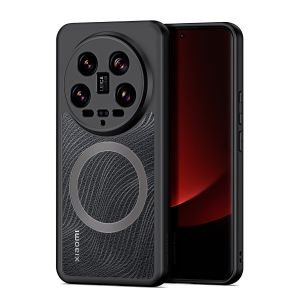Xiaomi's Ultra series are known for their extreme configuration, attracting the attention and love of many users, especially from the 12S Ultra generation began to cooperate with Leica, bringing even better image performance, after nearly three years of development, we ushered in the new Xiaomi 14 Ultra, which may also be the strongest this year, the overall experience of the best flagship phone.
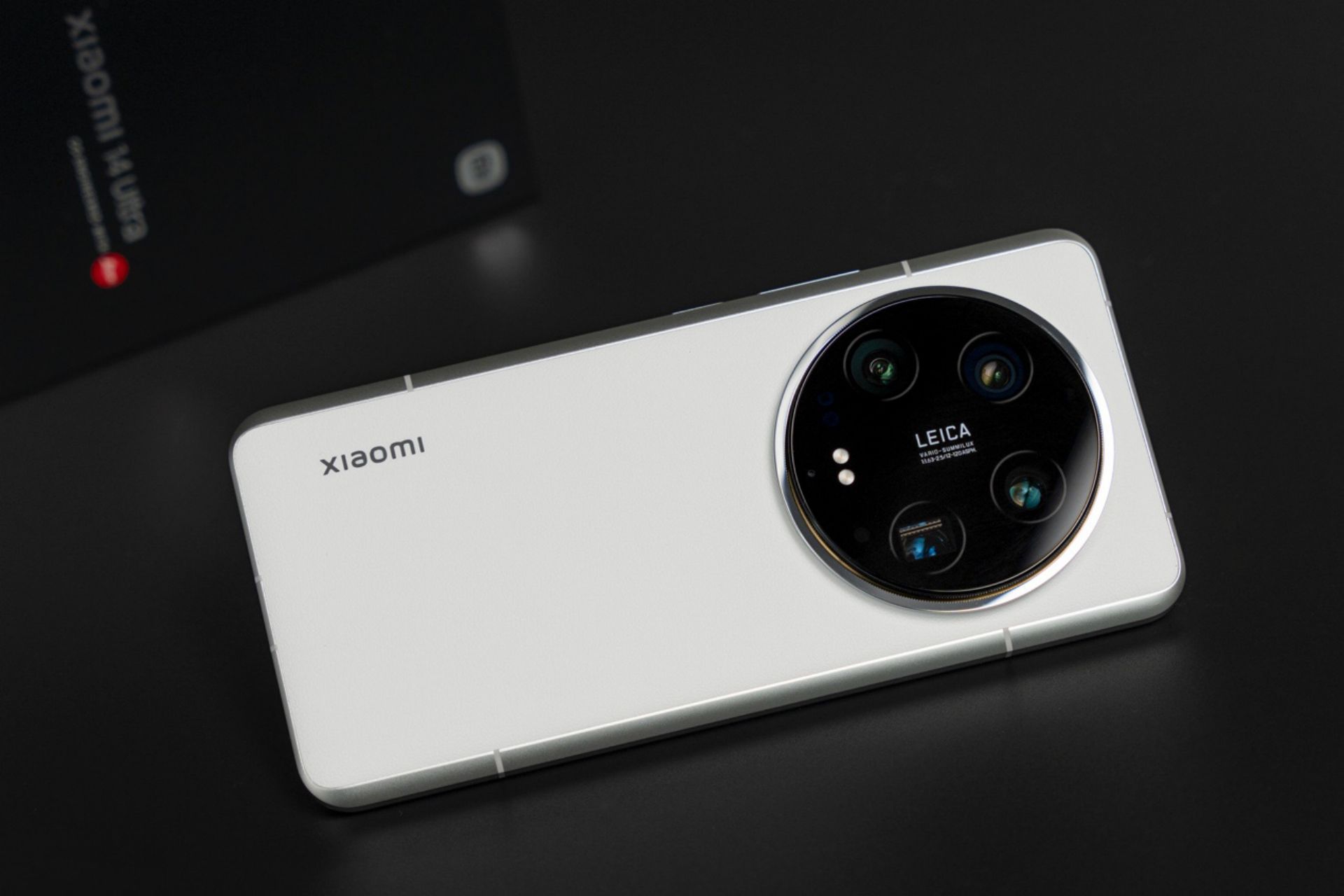
Parisian studded lens ring, showing professional image
Let's take a look at the appearance, Xiaomi 14 Ultra continued the previous Xiaomi 13 Ultra design ideas, and to optimize the feel for the purpose of some small changes, such as the previous back of the "small hump" this generation was removed, returned to the state of pure flat, so that the back of the hand feel better at the same time, the unity of the stronger, the machine will also look lighter. The whole machine will also look lighter. Side of the power button this time also joined the "Parisian stud" design, touch more texture, and blind operation can also reduce the occurrence of accidental contact with the situation, this design I quite like.
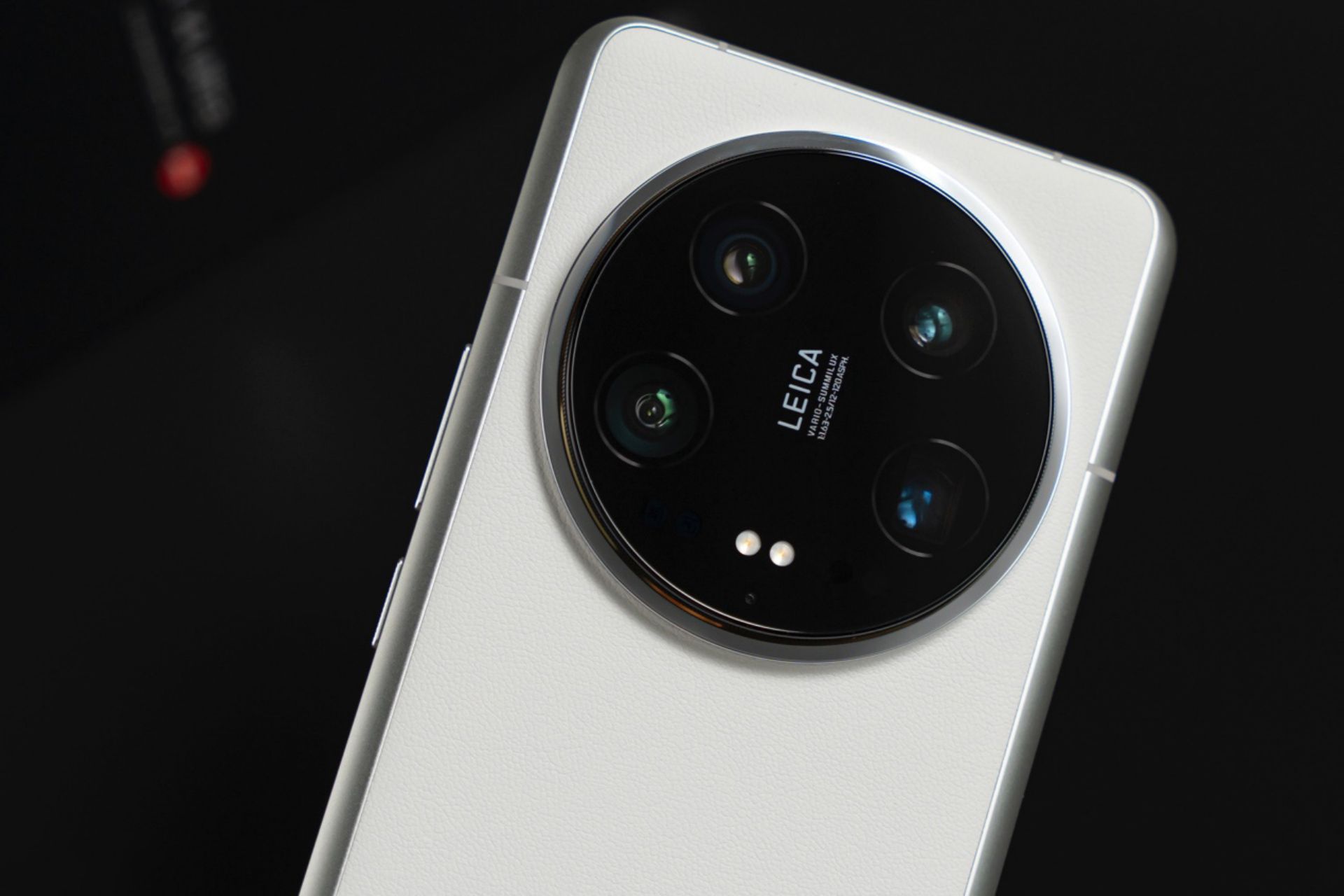
The version we received is white, the back plate with the third generation of technology nano leather, homage to the traditional camera leather design, out of the catch close to the real leather, wear-resistant, stain-resistant, yellowing-resistant and anti-bacterial ability is higher than the previous generation. This generation also has a blue color scheme, and it is rumored that ceramic will be used to create the back plate, the overall texture should be even better, but the weight will definitely be heavier.
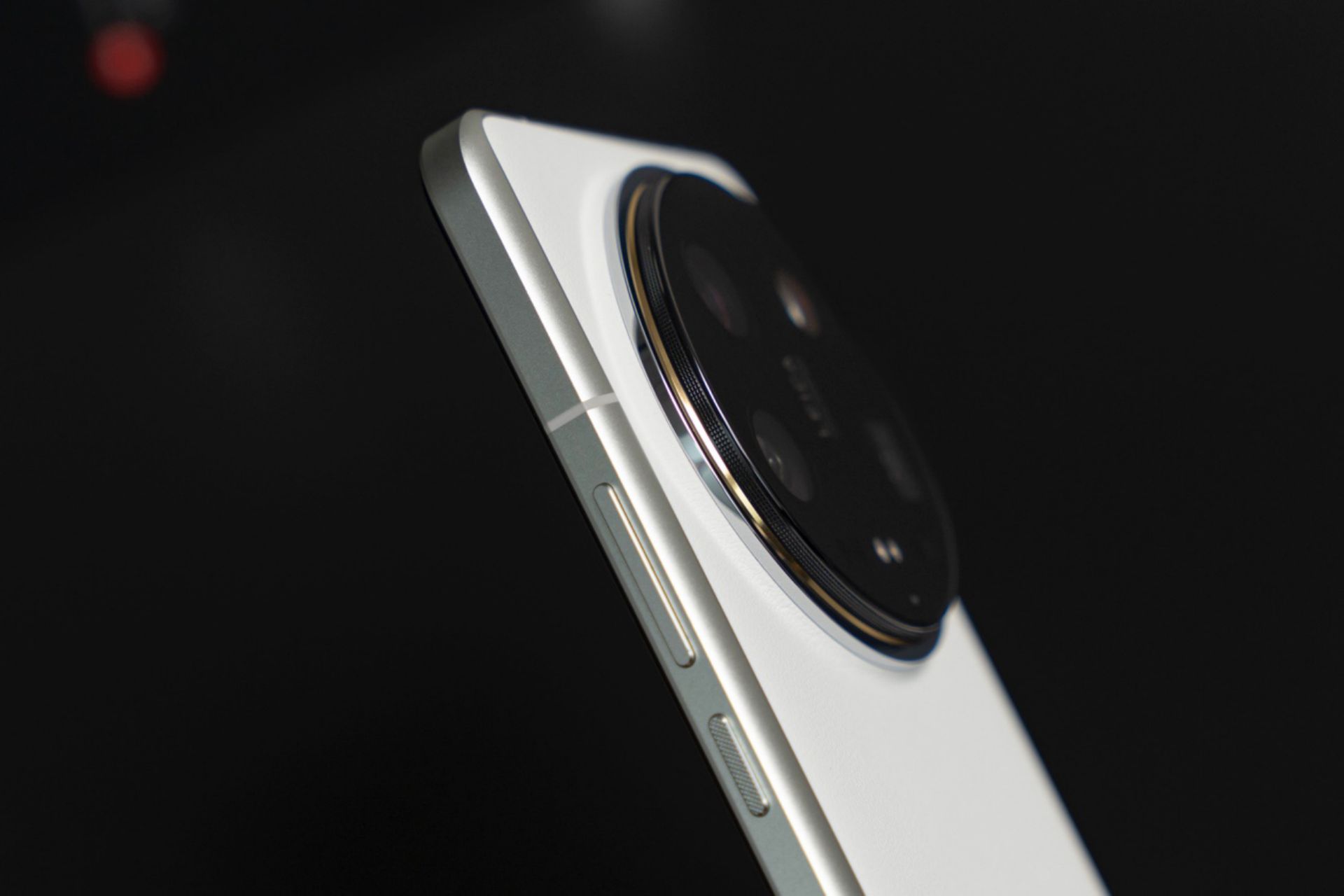
Take a look at the image module on the back panel, with black "Parisian studs" surrounding the lens and the gold ring that's always been a part of the Ultra lineup, which is actually a bit more understated this year. On the cover of the module is written the detailed parameters of this imaging system, VARIO-SUMMILUX, which is also Leica's largest aperture lens in moving image, f/1.63 to f/2.5 aperture, 12mm-120mm equivalent focal length. So with such an image configuration, how does it actually perform?
Hardware upgrades, software advancements, creating the king of imaging
The biggest highlight of the Xiaomi Mi 14 Ultra is definitely the machine's images. In terms of hardware, the main camera of the Xiaomi 14 Ultra uses a new LYT-900 sensor, the same as the IMX989 is an inch sensor size, but the use of a more advanced 22nm process to create, the power consumption is reduced by half, the well capacity is also a huge improvement, with the new 16:1 Dual Native ISO Fusion Max, so that the dynamic range of 14EV, which also makes the Xiaomi 14 Ultra in the capture of the image, but not the image of the camera. enables the Xiaomi Mi 14 Ultra to capture photos without relying on the multi-frame HDR algorithm for highly dynamic captures.
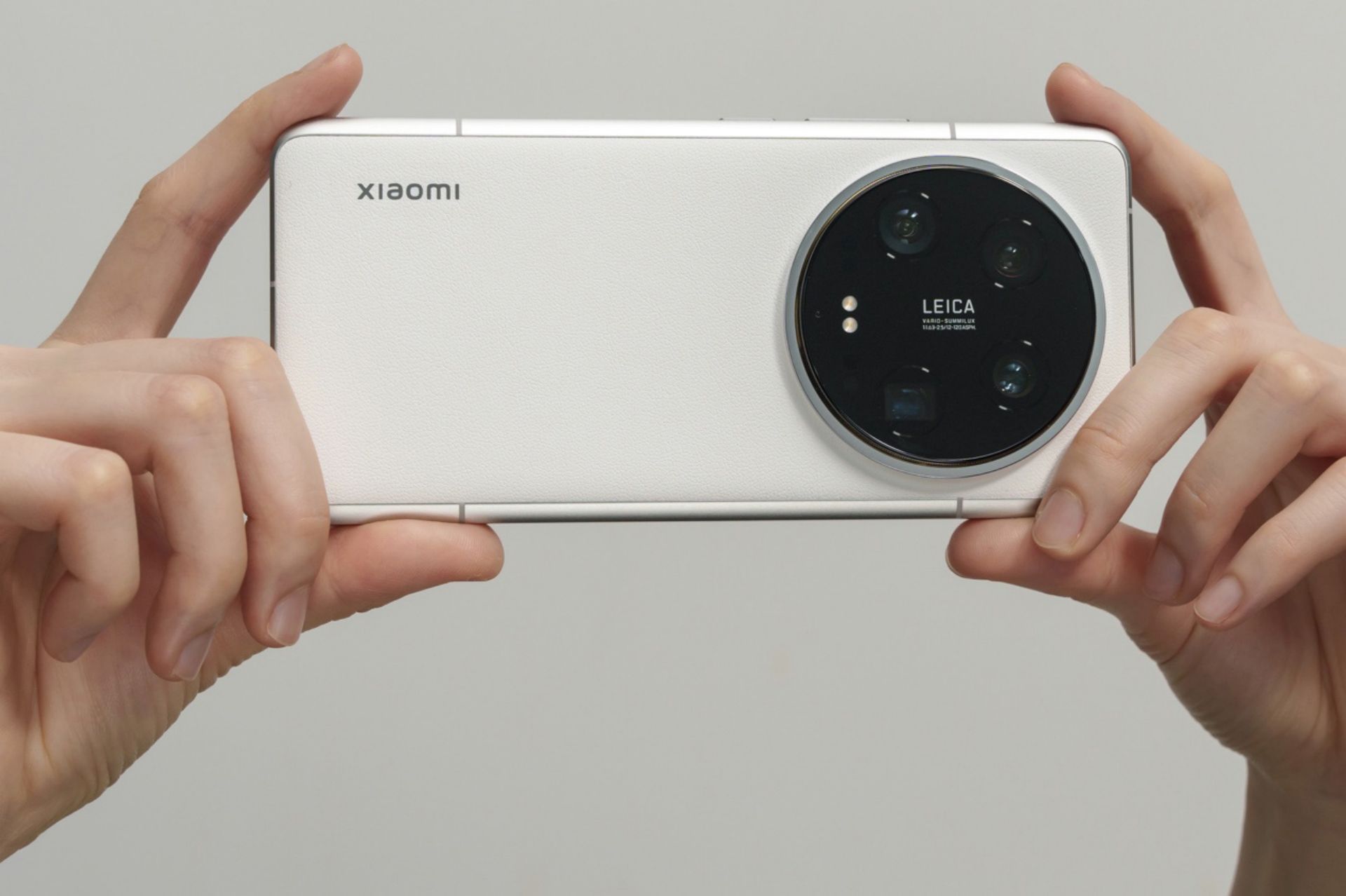
The main camera also brings a large f/1.63 aperture, and the Infinity Aperture, which was also present on the 14 Pro, is certainly not absent in this generation, supporting stepless switching of f/1.63-f/4.0 aperture, which can be used to control exposure as well as improve resolution and edge-to-edge quality in close-ups.
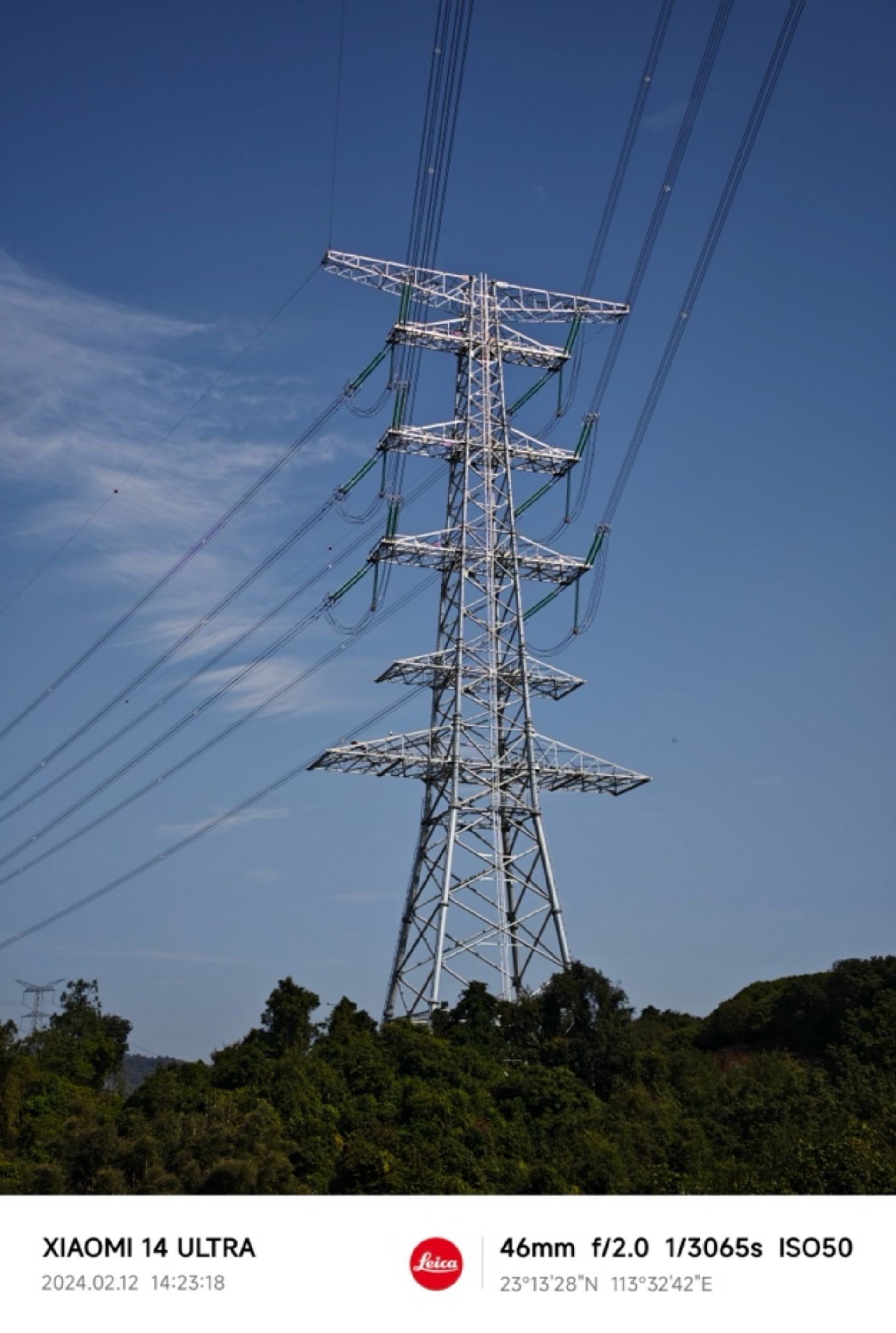
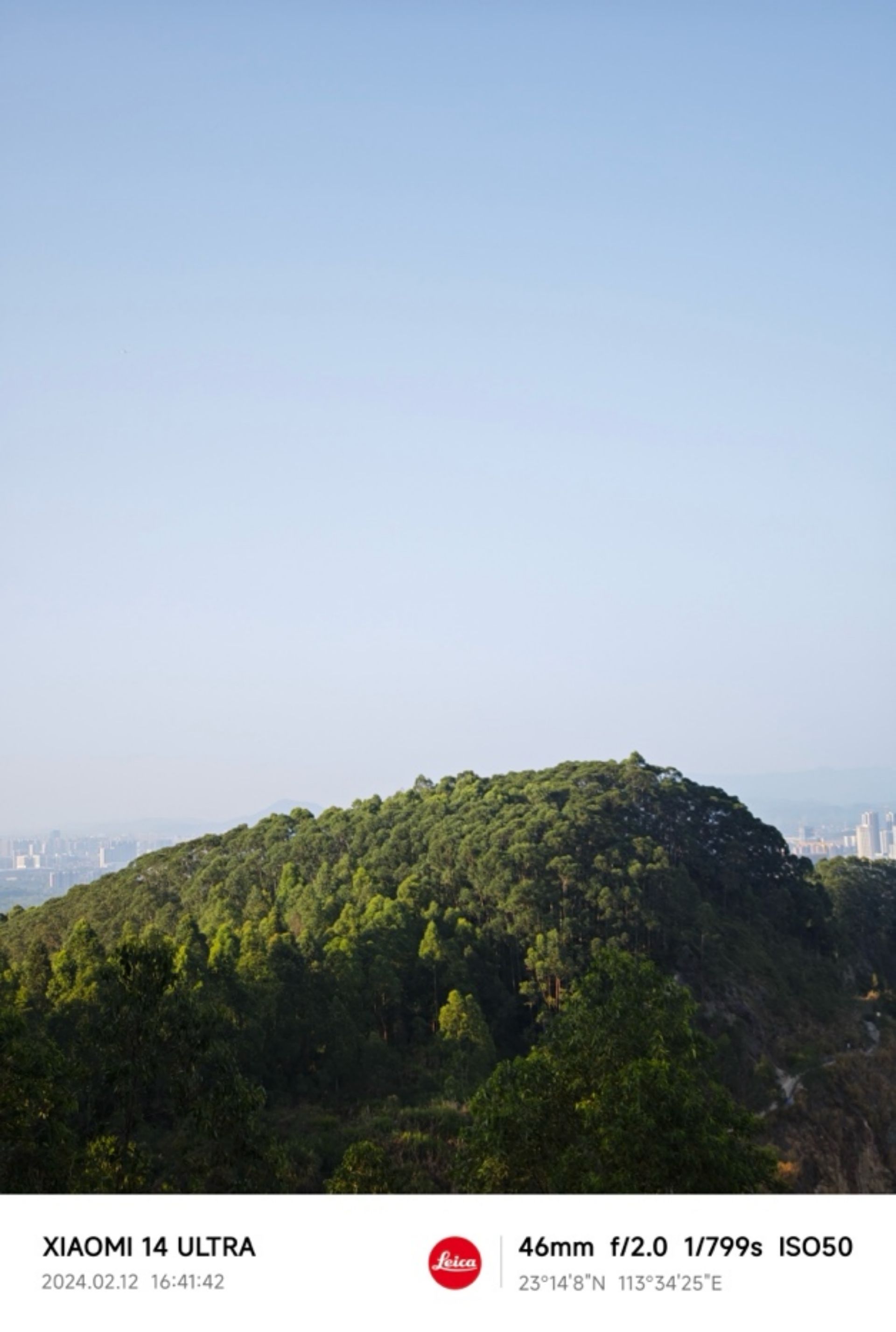
Speaking of the main camera samples, we have to mention the current generation of Leica color, this generation of imaging flagship, began to emphasize the level, rich detail levels can bring a better sense of presence to the work, while richer color levels can bring a sense of reality.
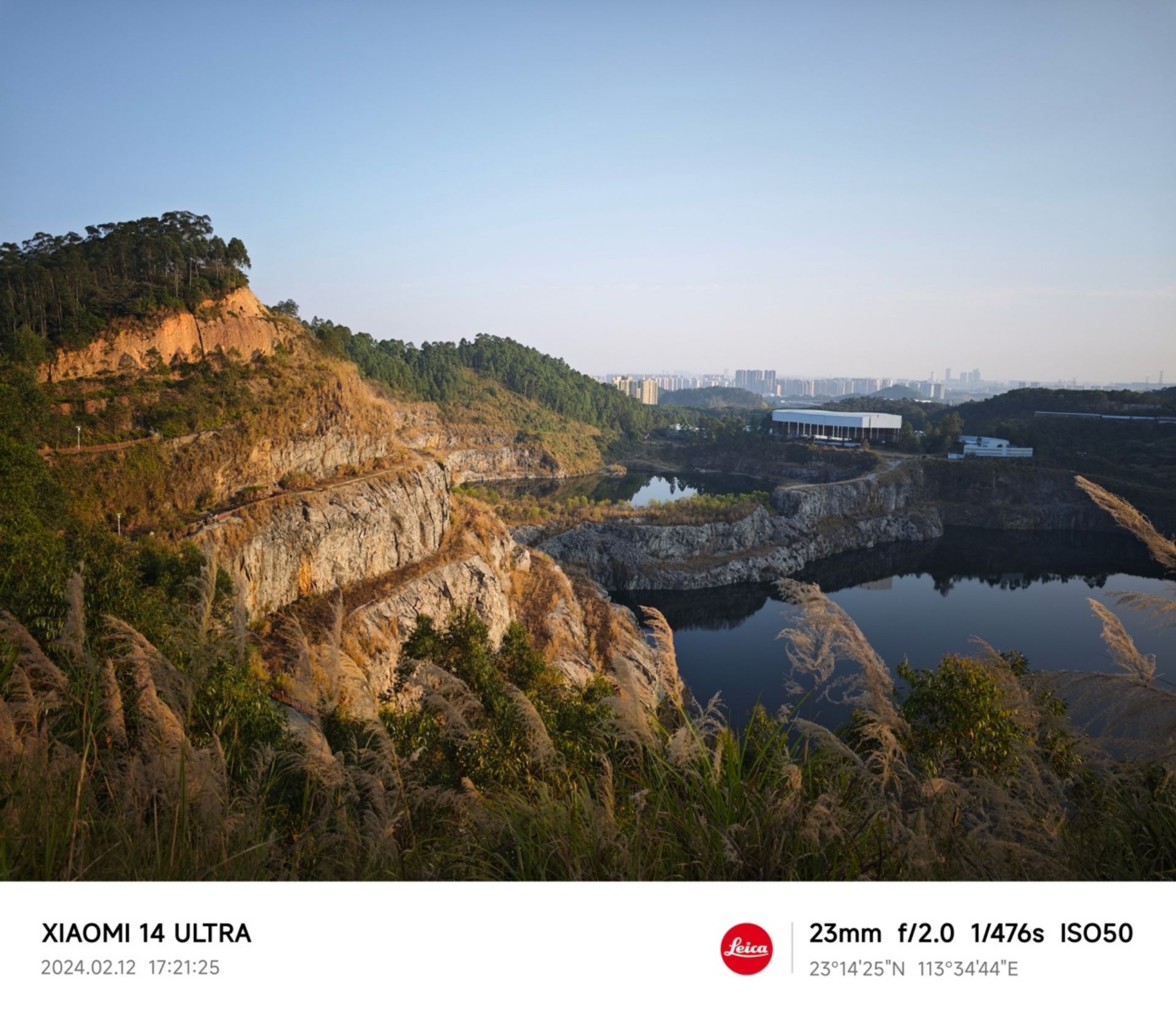
As you can see from the above samples, the color transition of the Xiaomi 14 Ultra is more natural, and will present the real color of the eye in the photo, such as the above picture of the sky color, can be presented in a very real state, and you can also notice that in the above picture of this kind of before and after the scene of the samples, the 14 Ultra will retain the real relationship between the shadow and light to make the whole space. The photo above, with its reddish color, is also a good example of how the 14 Ultra can be used to create a three-dimensional image.

As you can see in the reddish photo above, the color rendering and transitions are excellent, and the correct light and shadow relationships have been preserved, giving the photo a premium feel.
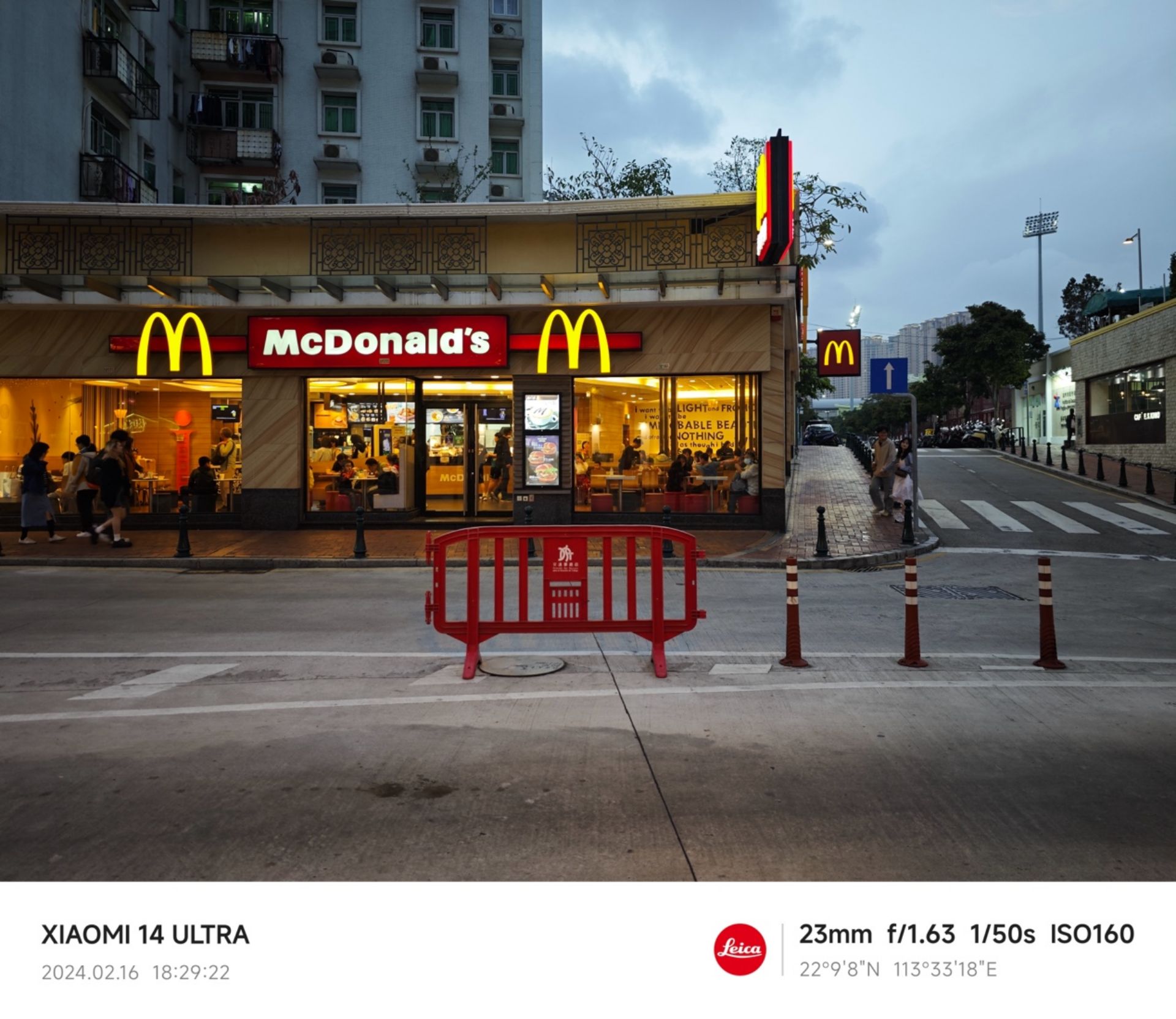
The LYT-900's extra-large sensor size allows it to perform well in dark night scenes, and the darker foreground better highlights the brightly-lit stores in the distance, with the McDonald's lighted sign rendered at a very natural brightness, and the red color behind it, also natural, pure, and quite nice to look at.
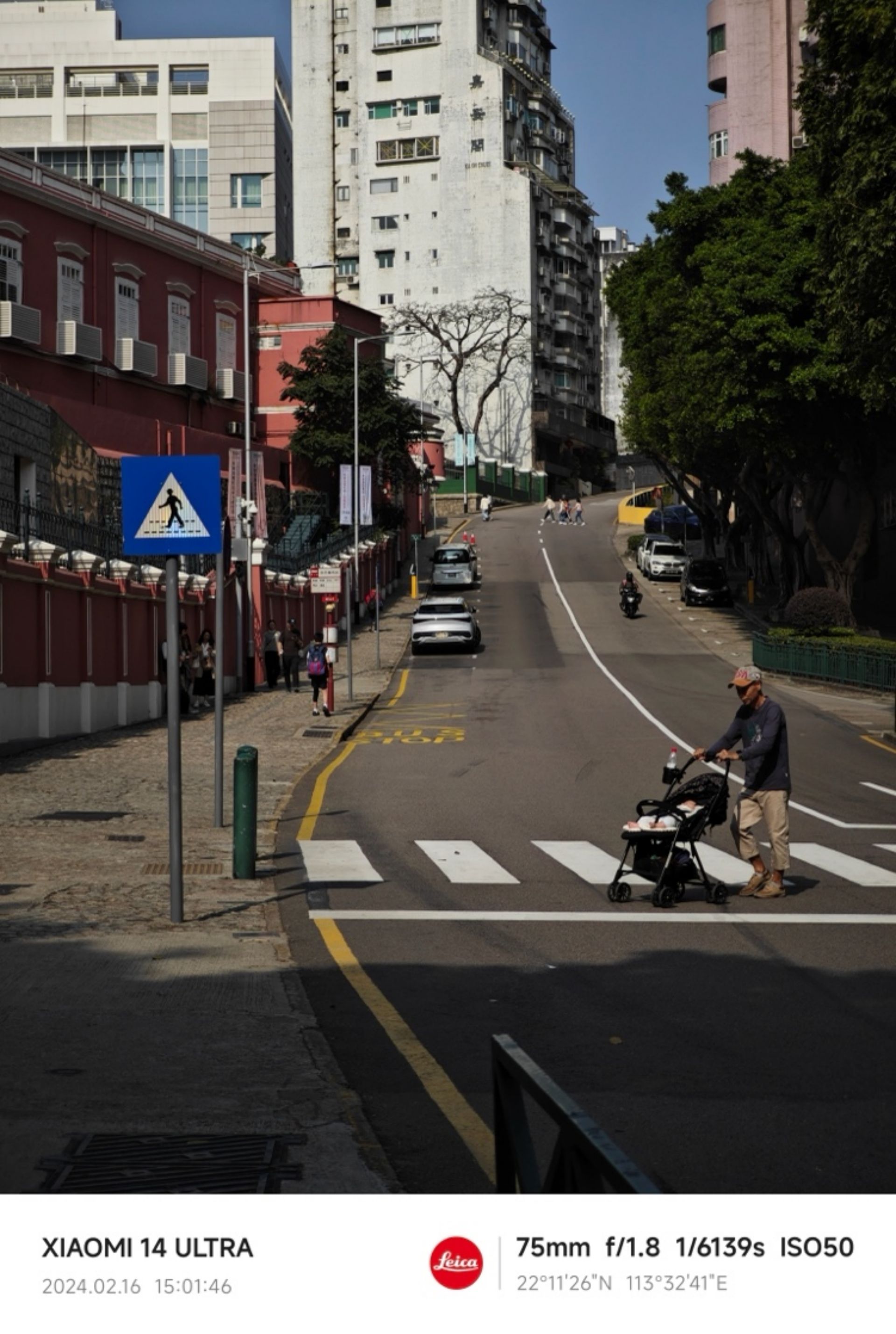
The sensors for the 3.2x telephoto and 5x telephoto lenses of this generation have not changed, the same IMX858 sensor is used, but the aperture has been improved to f/1.8 for the 3.2x, and f/2.5 for the 5x periscope telephoto, which is 474% and 196% greater in light intake compared to the iPhone 15 Pro and Pro Max, respectively.
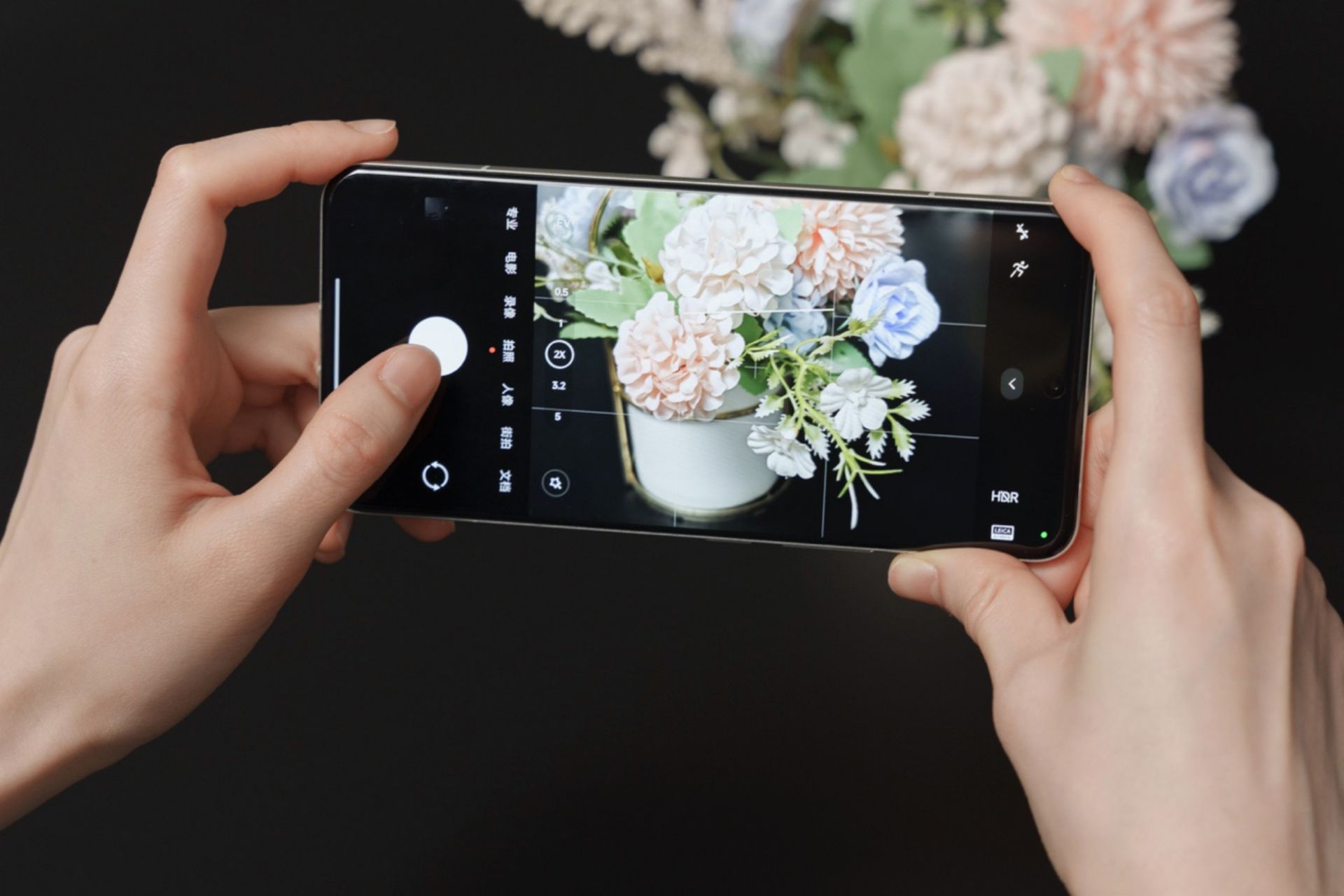
These two lenses in the dark light of the amount of light is very impressive, and unlike the Friends of the image flagship, Xiaomi uses two IMX858, image quality level is similar, regardless of whether there is enough light in the scene to maintain a relatively consistent image quality performance, will not be like the Friends of the switch from the medium focal length lens to the telephoto lens after the sharp decrease in image quality, the photographic experience is greatly compromised.
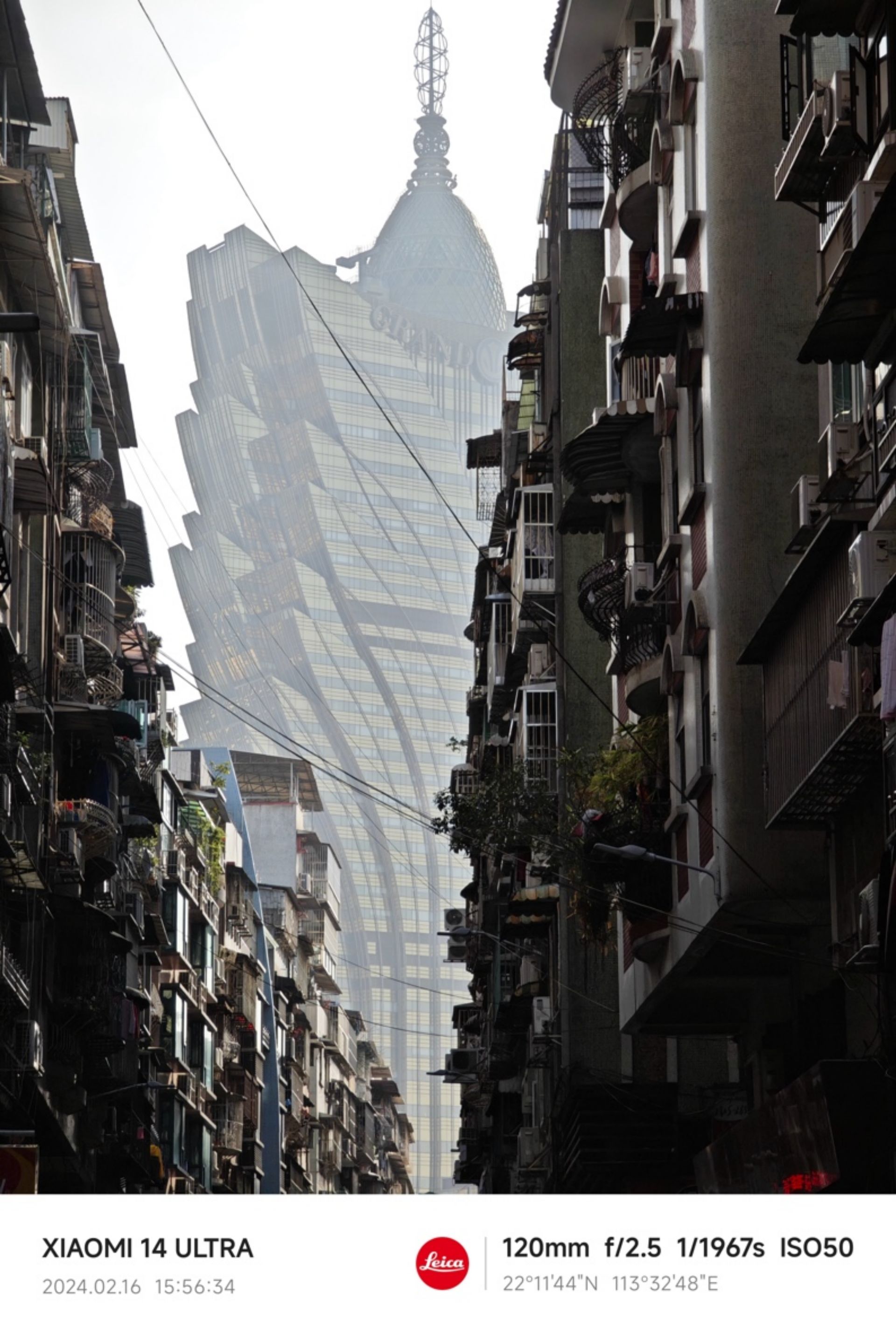
The 3.2x 75mm-equivalent lens also supports floating lens group technology, and the closest focusing distance reaches 10cm, bringing super close-up capability.
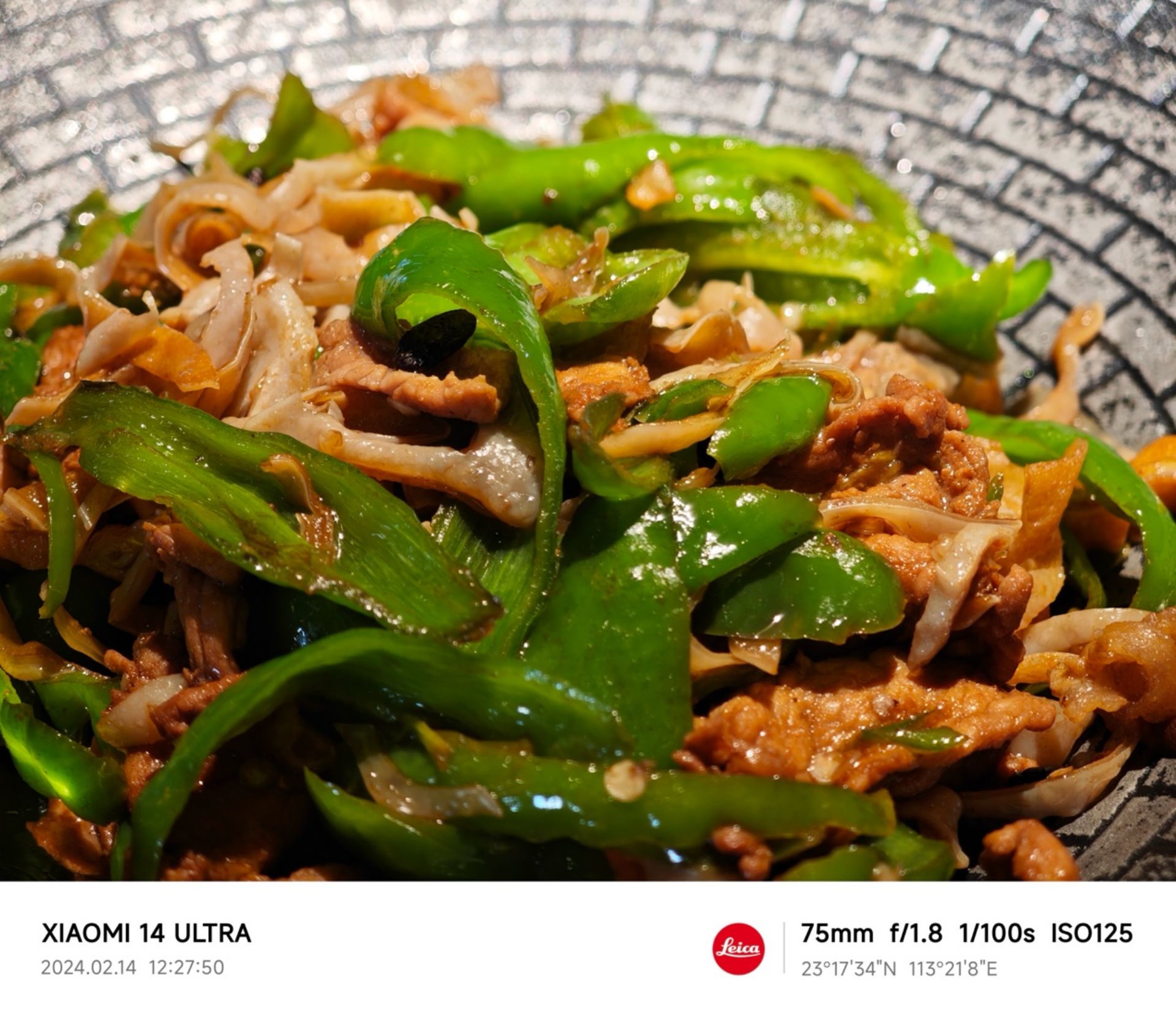
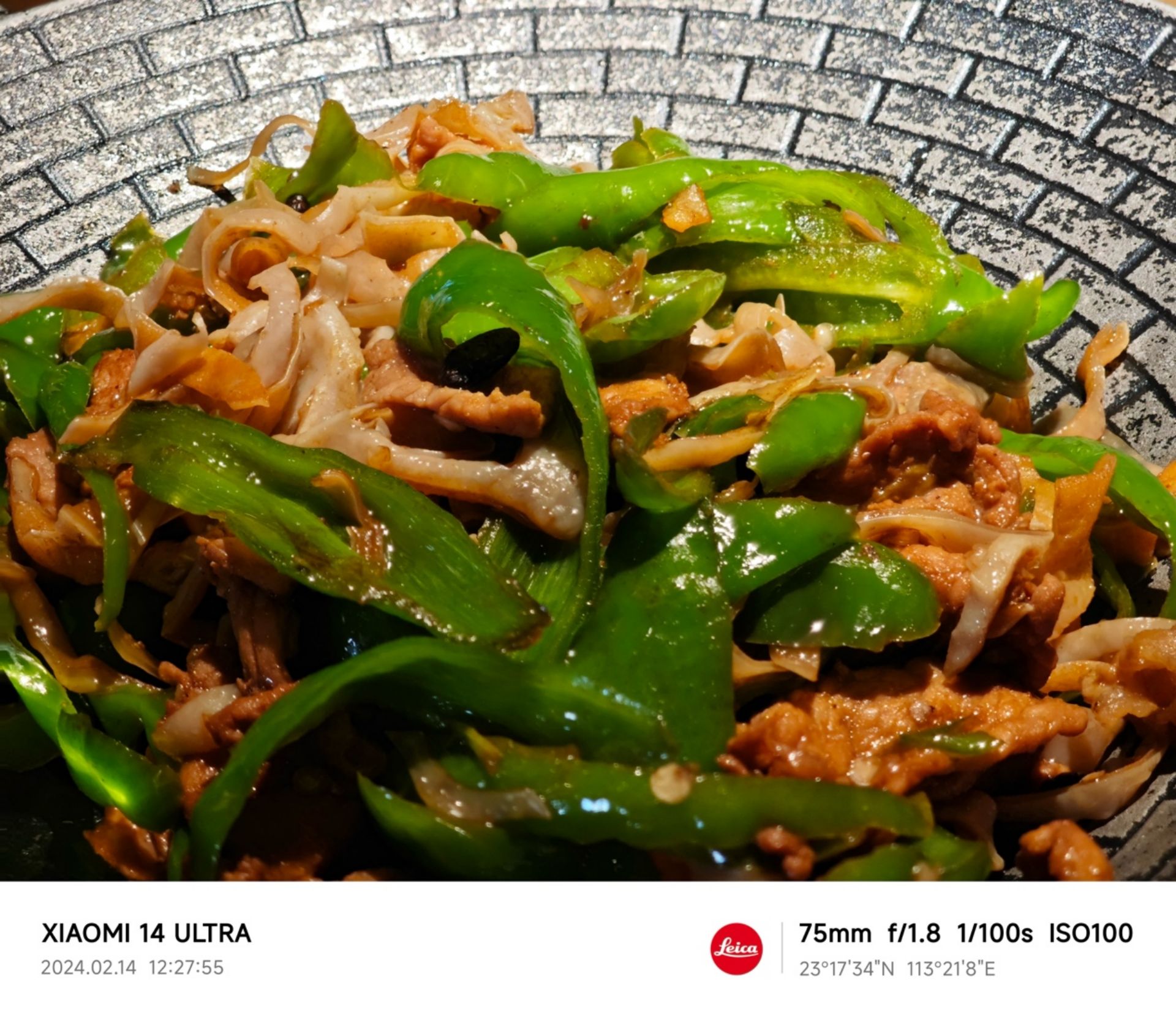
The aperture of this telephoto lens reaches f/1.8, the problem of shallow depth of field occurs when shooting close objects, that is, often referred to as bokeh is too strong, may be a whole dish of food can not be shot clearly, this time you can choose the camera interface "depth of field fusion" function, after turning on the front and rear of the camera can be shot clearly, after turning on this feature, you can shoot before and after the clear. After turning on this function, the depth of field of the lens can be extended to f/24, shooting everything can be shot clearly.
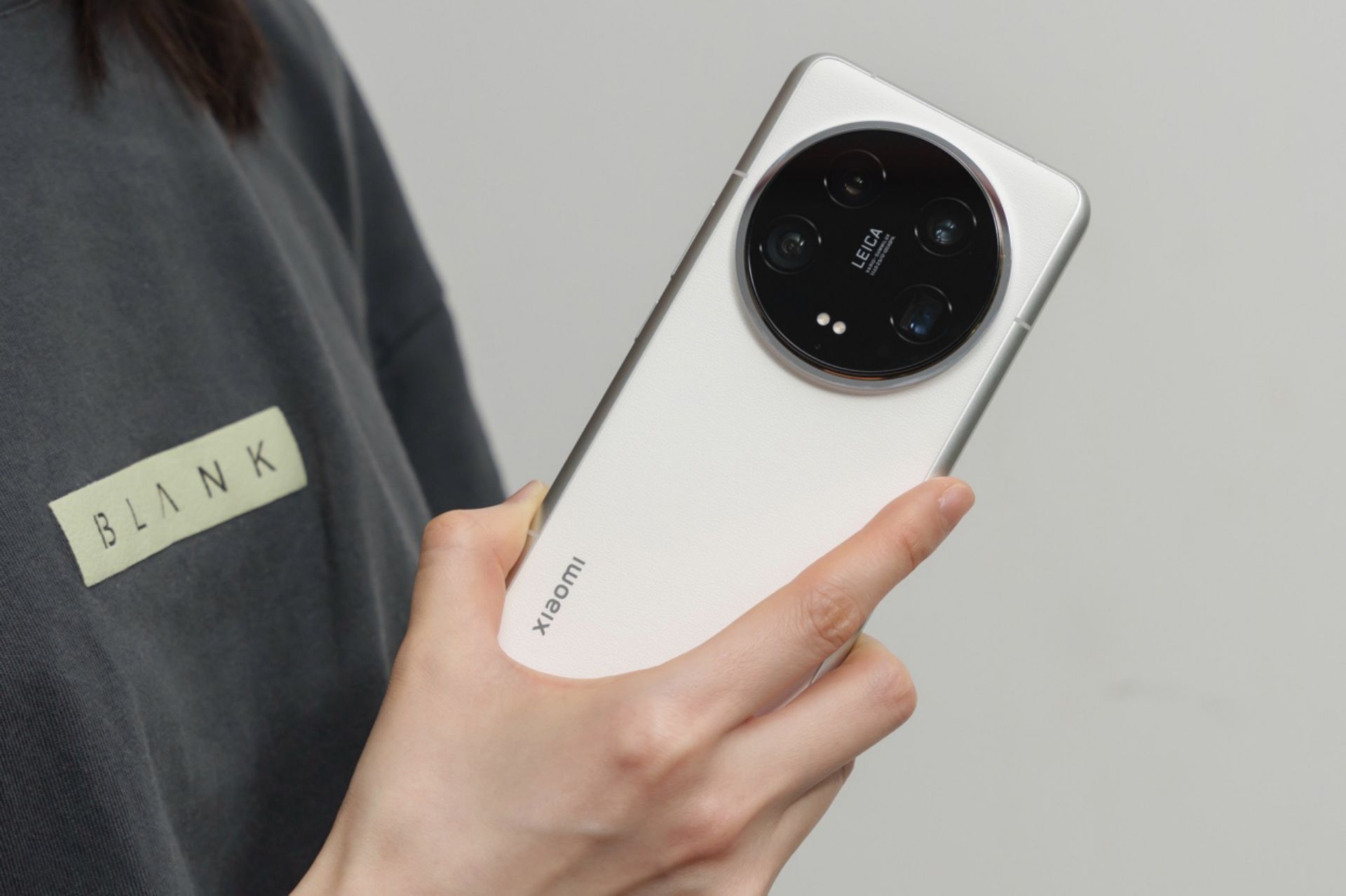
Periscope telephoto is to support 5 times optical zoom, equivalent to 120mm focal length, not only 5 times excellent image quality, but also through the Remosaic mode to get 10 times lossless zoom, and even after turning on the 30 times, you can also through the AI enhancement of image quality, so that it reaches a usable level. Not only that, this lens also supports a floating lens group with a 30cm closest focus distance, which also allows for super close-up shots.
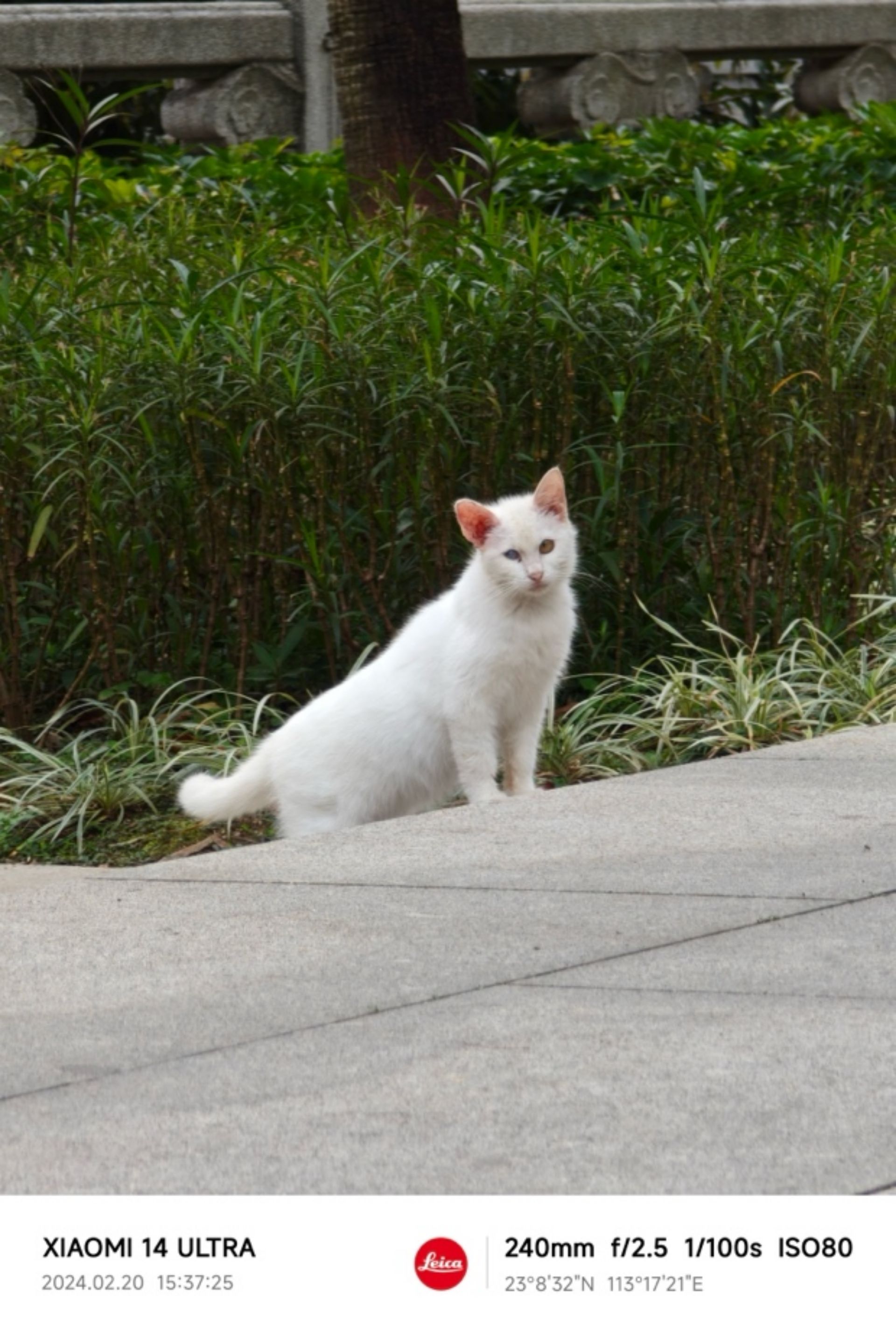
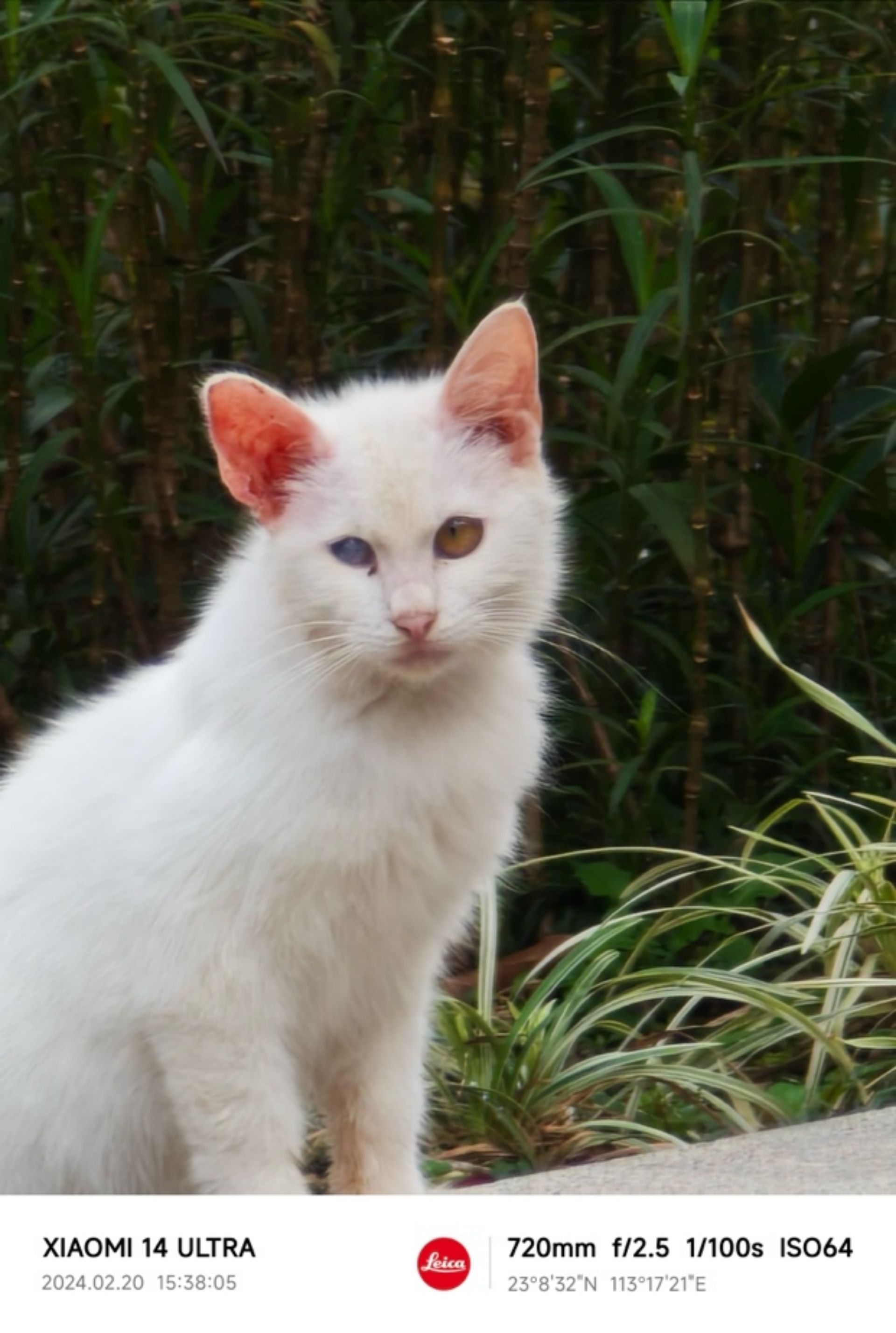
The excellent hardware configuration coupled with great software algorithms makes the Xiaomi Mi 14 Ultra's imaging quality quite usable from 0.6x to 1x, 2x, 3.2x, 5x, 10x and even up to 30x.


So now that we're talking about the full six focal lengths that come with this quad-camera, will they be able to maintain consistent color rendering with usable image quality? In fact, the Xiaomi Mi 13 Ultra, a year ago, already laid out the topic of multi-camera color consistency and accomplished it quite well, and this generation is no exception, causing a photographer friend of mine to exclaim, "With such exaggerated multi-camera consistency, it's finally possible to achieve focal length freedom."
From usable to usable, portrait mode catches up with the mainstream
After talking about the Xiaomi 14 Ultra's landscape and humanities street sweeping shots, next up is the portrait mode. In last year's Xiaomi 13 Ultra review, I described its portrait mode performance as "a big step up from unusable to usable," and with this generation of the Xiaomi 14 Ultra, I'd call it another big step up from usable to usable.
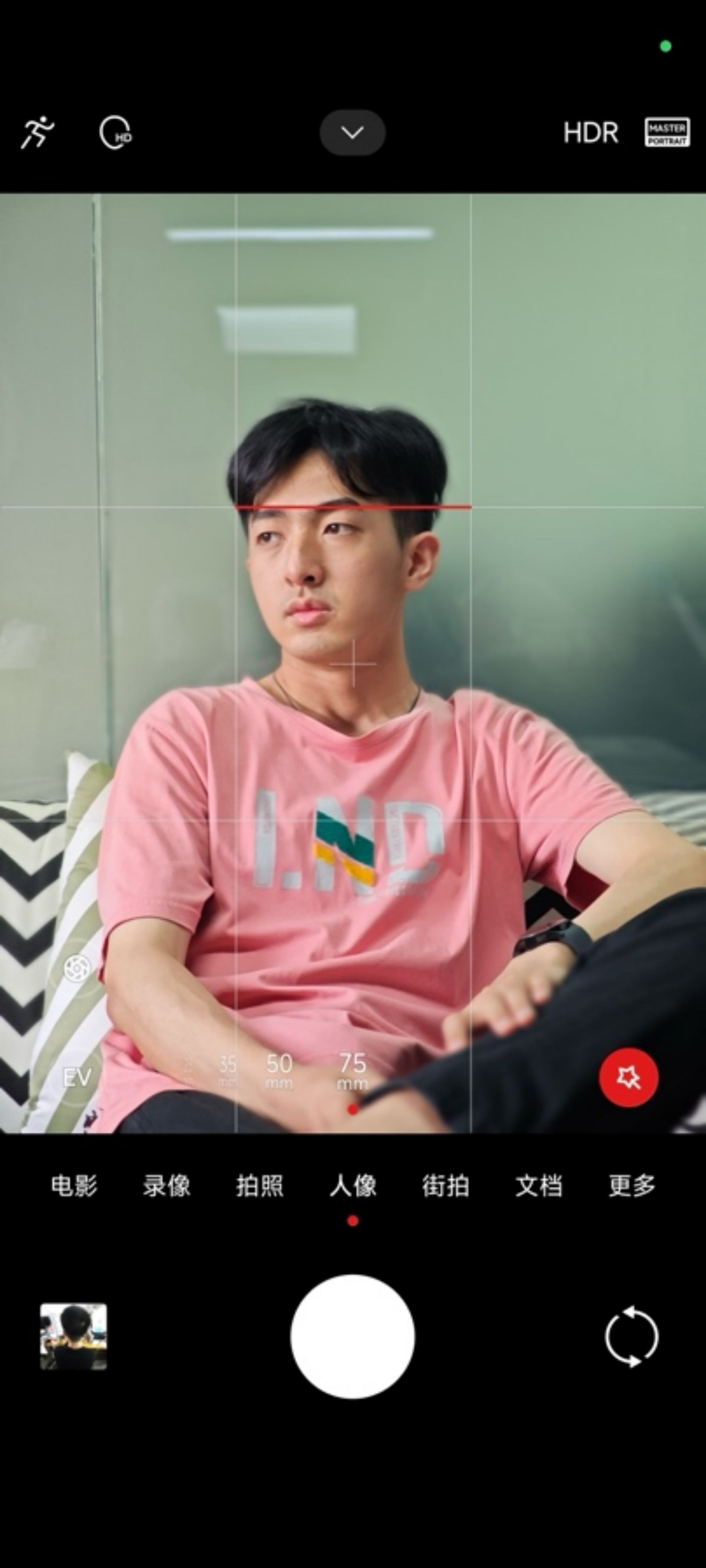
What makes this statement? Let's take a look at the interface of the Xiaomi 14 Ultra Portrait Mode, this time in the Xiaomi Portrait Lens Package and focal lengths are separated, in the default mode, users can also adjust the focal length of the lens at will, there are four focal lengths of 23mm, 35mm, 50mm and 75mm to choose from, and will no longer be the same as in the previous generations of the bokeh effect and focal length binding, greatly restricting the use of portrait lenses. Unlike its predecessors, the "bokeh effect" is no longer tied to the focal length, which greatly restricts the creative freedom of the Portrait Mode.


The Xiaomi Mi 14 Ultra starts to pay more attention to the "layers" of the photo, and how to shape the "layers", that is to start from the light and shadow. As you can see from this 75mm-equivalent portrait sample, the texture of the human face has more retention, and will not be violently peeled to make the skin too smooth, resulting in a loss of realism. In the part of the five senses, there is more light and shadow retention, making the five senses look more three-dimensional, the light and shadow between the character and the background also has a great separation, the subject of the character is more prominent, then the rendering of the effect is naturally quite excellent.
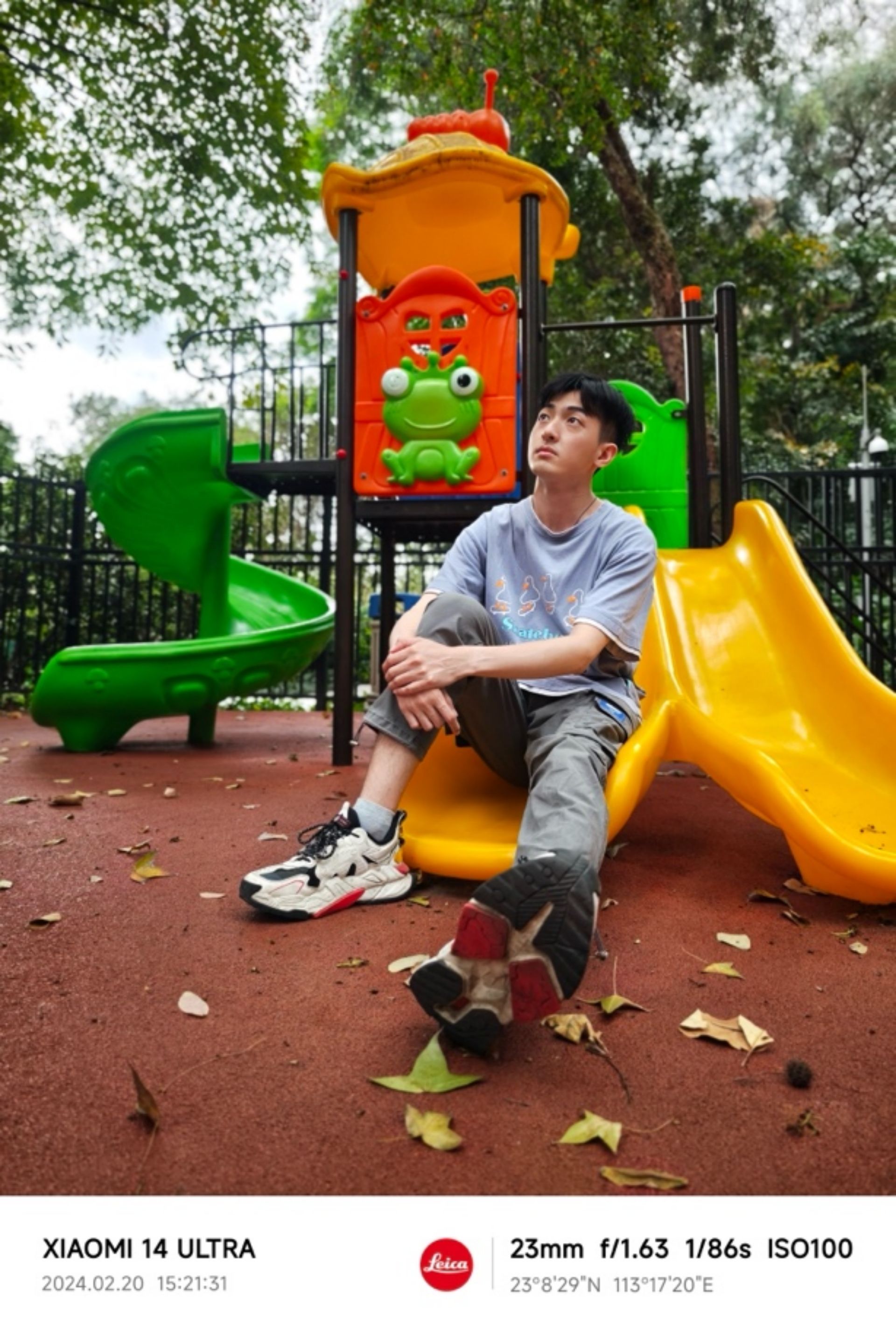
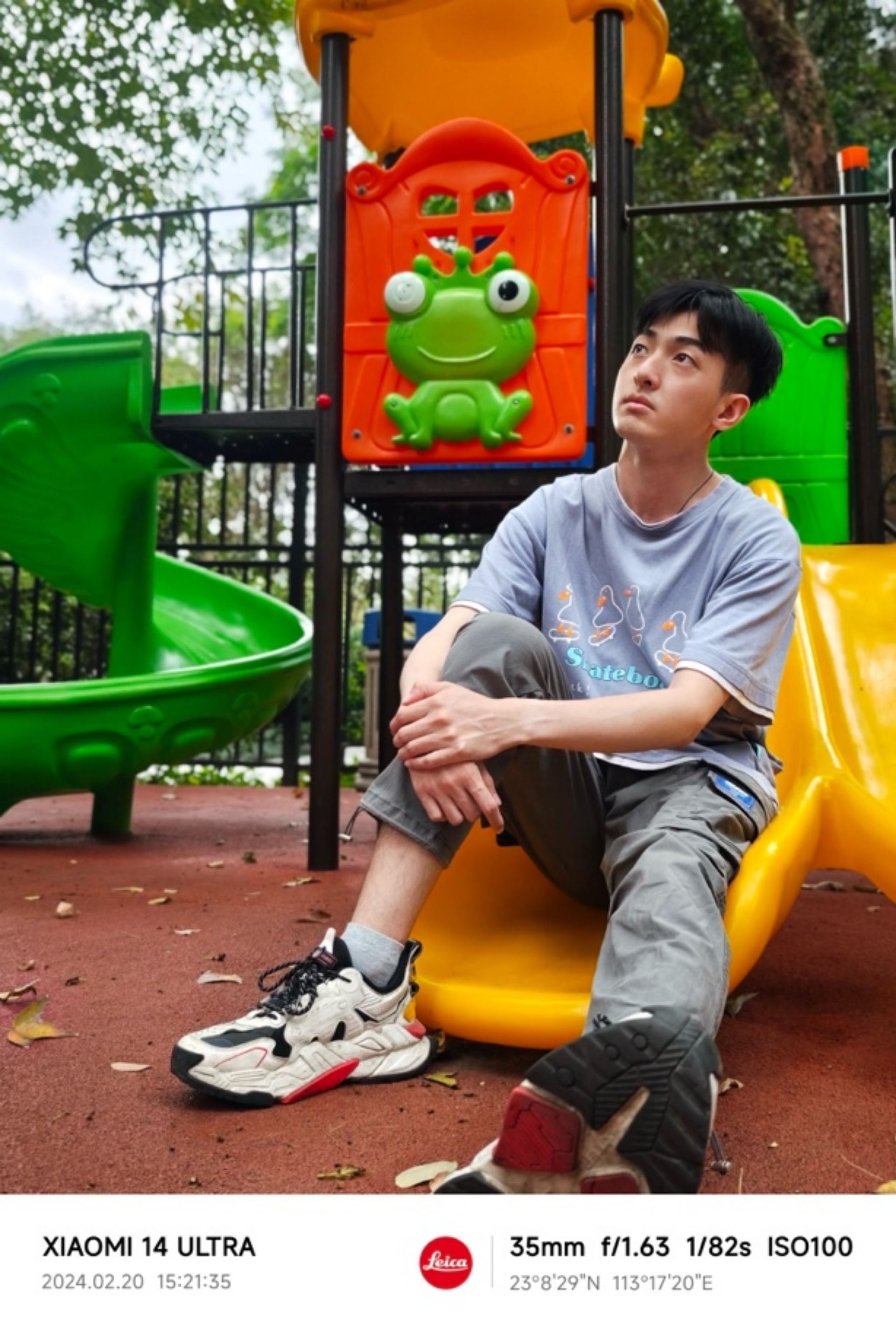
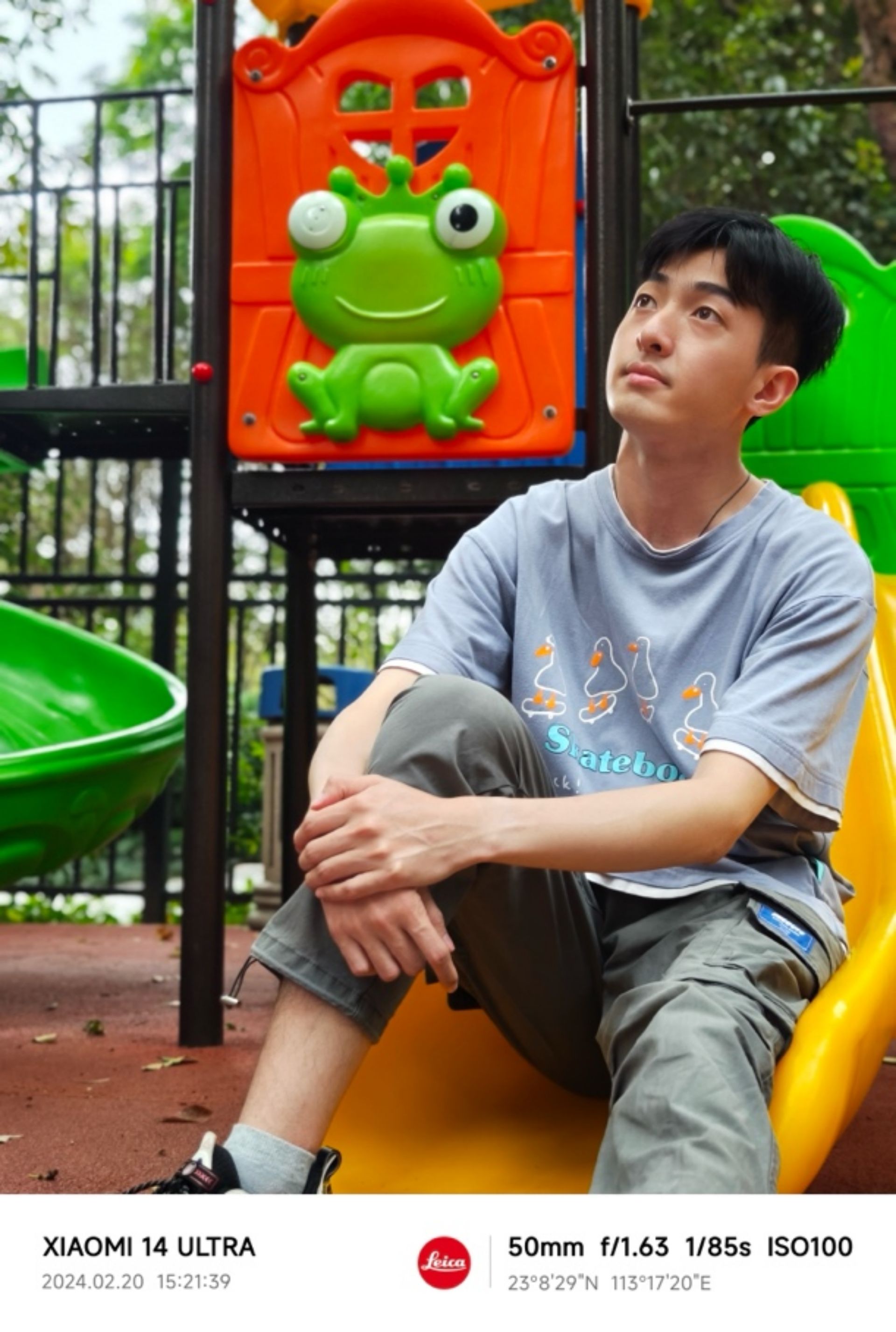
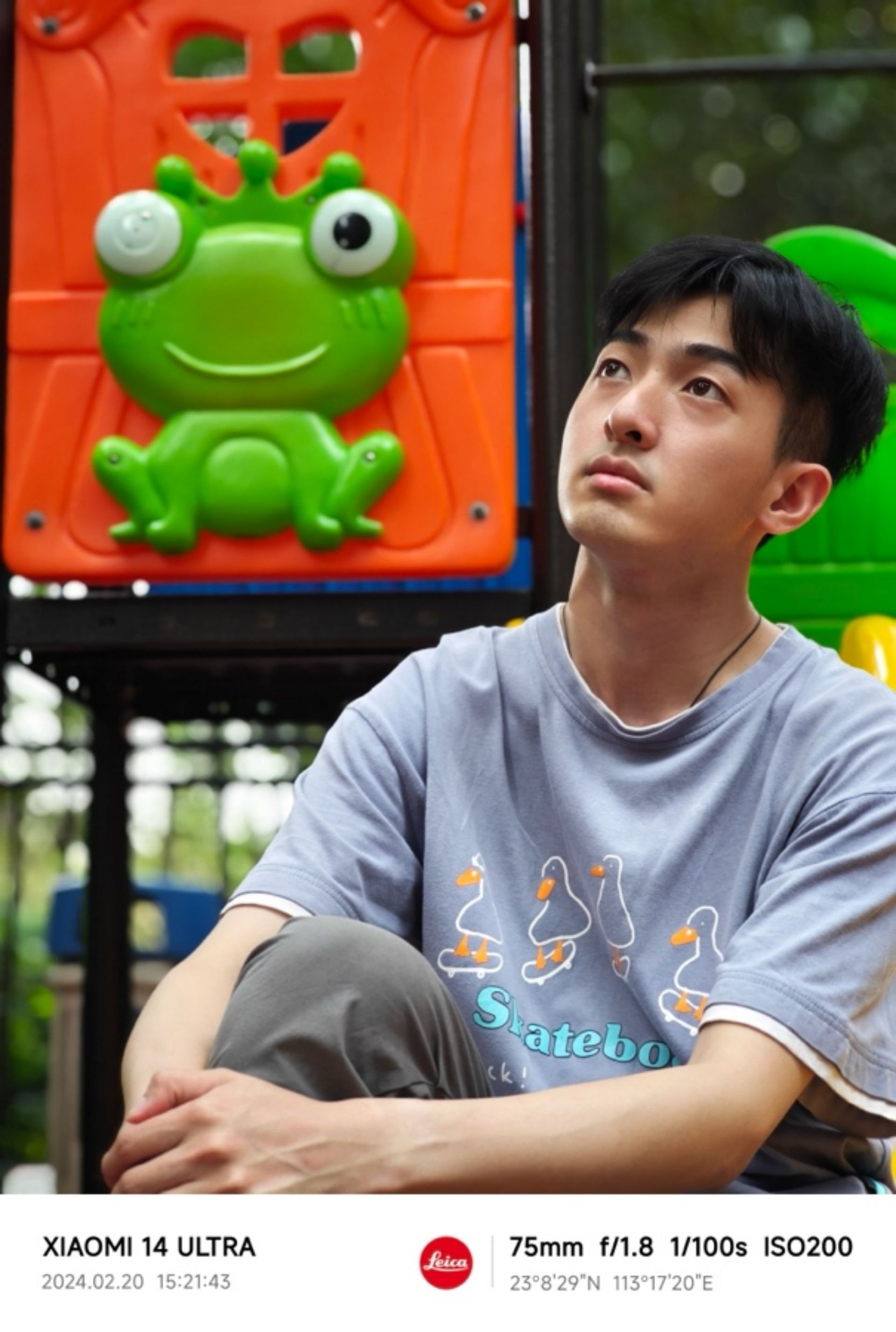
The rich choice of portrait focal lengths mentioned above gives creators greater freedom, and different focal lengths in the same scene can also present a different feeling, and no matter which focal length, the Xiaomi 14 Ultra has done a great job of keying in on the edges of the characters and restoring the light and shadow on the face, so it seems that this generation can really shoot portrait/humanities blockbusters on the go.
Ultimate image experience, industry-leading HDR and UltraRAW photo recording
There are also some image "small features" is very worthy of praise, such as the UltraHDR Ultra Dynamic Photo, in fact, we all know that in the past few years there are a lot of manufacturers are doing similar HDR photo concept, and Xiaomi this time can be said to be the leading again.
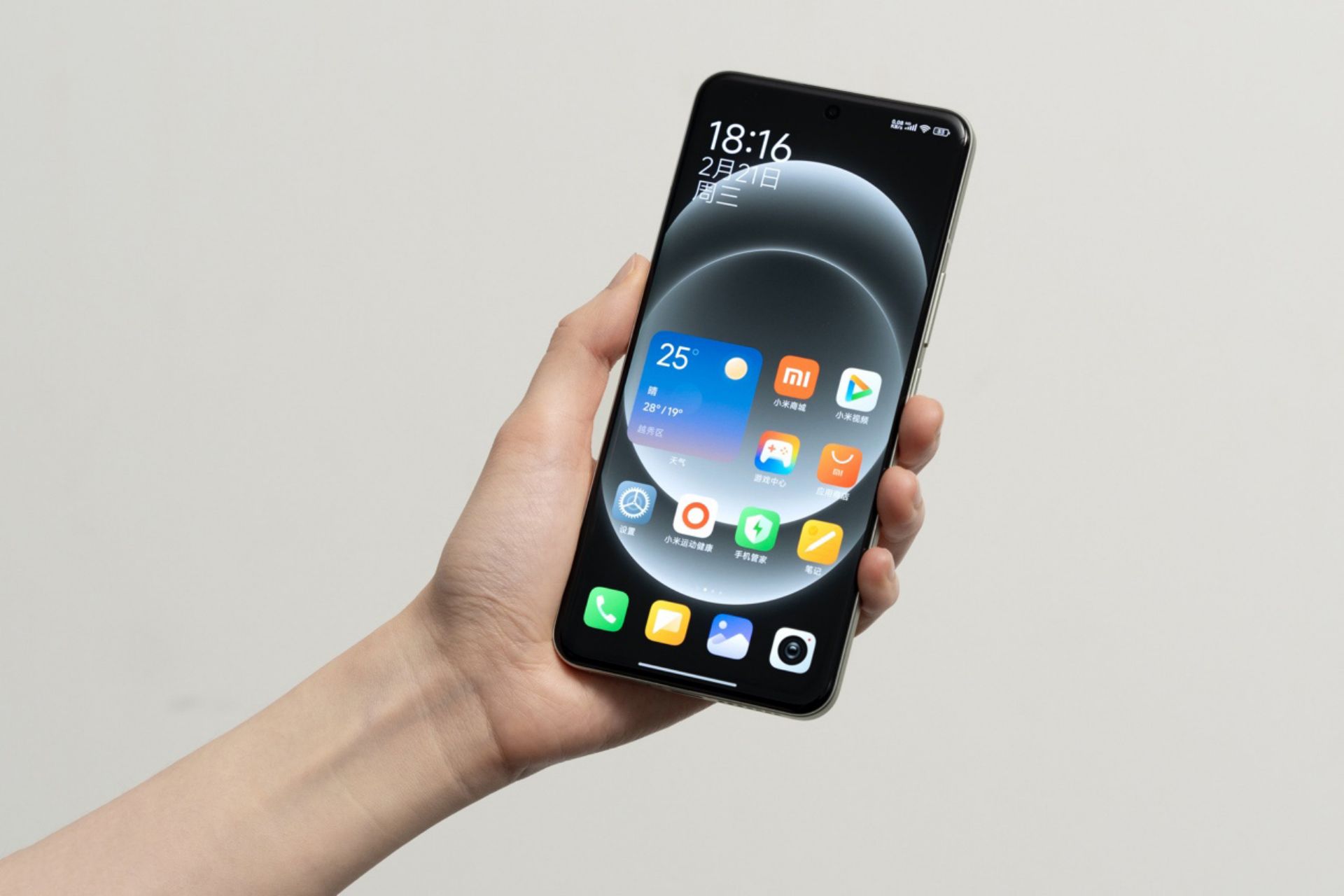
The Google JPEG-R format, which is the industry's common specification, has excellent backward compatibility, and any software that can read JPEG can display SDR images correctly. These photos are also natively supported by Adobe Lightroom, so they can still be edited in the high dynamic range on the phone. And even after editing on a cell phone, they can still be displayed in HDR.
UltraRAW Super Digital Negative also has some upgrades this time, the highest recorded color depth of 16bit, the native dynamic range of up to 16EV, even if overexposed or underexposed by 2EV, the image can still be restored in post-processing, and the previous deep cooperation with Adobe, so that these RAW photos can be edited in Photoshop and Lightroom. The UltraRAW is still a good idea.
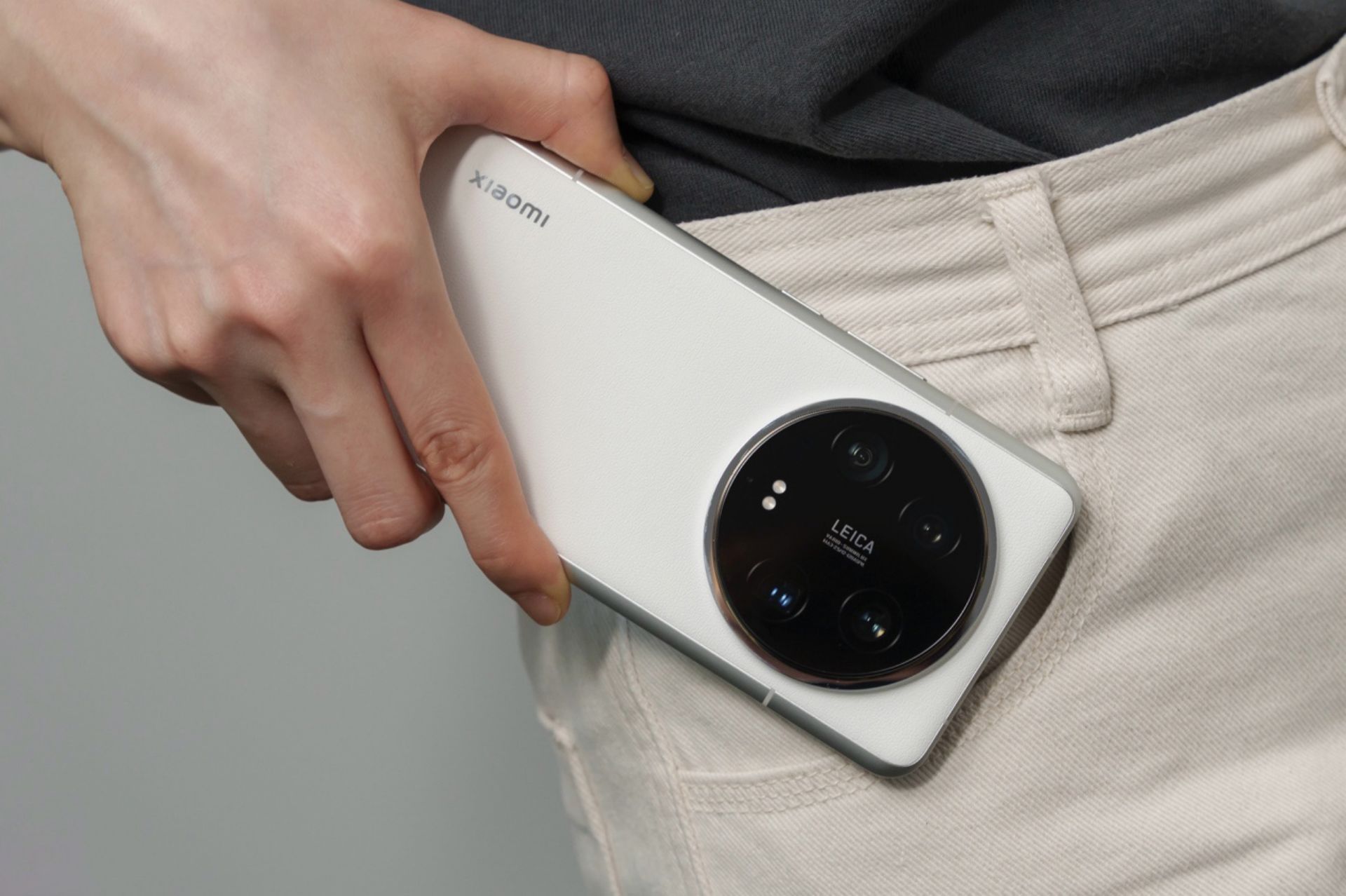
However, this UltraRAW still has a regret, that is, in the case of turning on this mode, the user can not choose to save only RAW photos, then in the shooting will generate a RAW and a JPEG format photos, the exposure of these two photos is also different, if you can provide users with an option to save only RAW, I think it will be better and more extreme.
Making up for the shortcomings of video, this time the specs and playability are high
The photos are strong, and this time around the Xiaomi 14 Ultra's video is going to be the strongest on Android as well. What Xiaomi brings to the table is the video recording specs of 4K@120fps for the main camera, 4K@60fps Dolby Vision for the main camera, 4K@60fps for the full-focus range, and of course, cinematic stabilization for the full-focus range. This time also brings users a new "Master Open Shooting" function, after the opening of the LYT-900 sensor can be better use of its full strength, more realistically restore the environment of the ratio of light, color is more neutral, accurate reproduction of the true color of the character's skin tone of the skin texture can also be retained.
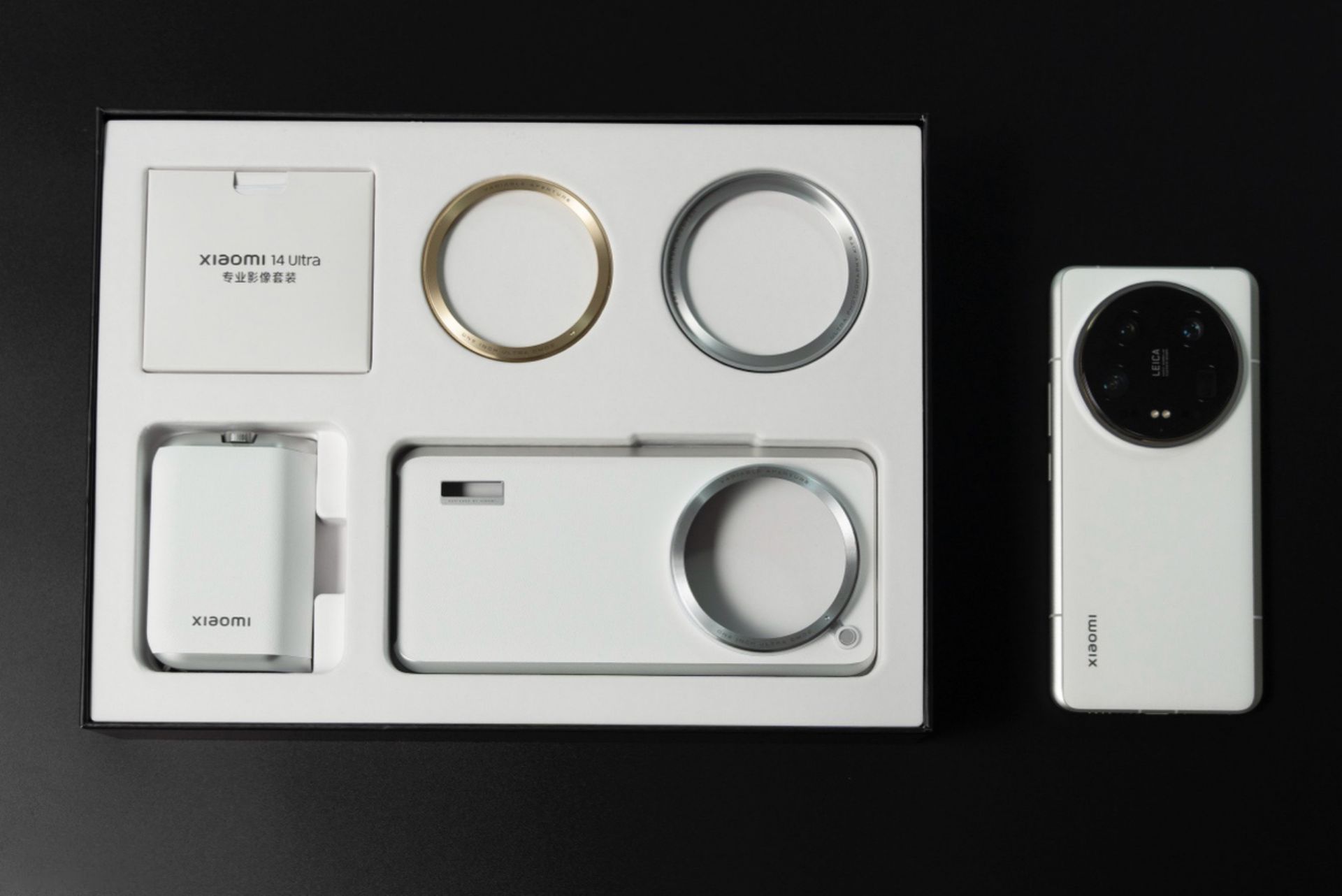
More professional and better use of the photography kit, can really make the phone into a camera!
Finally, let's talk about the new camera kit. Unlike its predecessor, the adapter ring of the case has a new snap design, which makes a clicking sound when it's tightened, which is quite sensational. And the other shooting grip has become a Type-C wired connection, which finally eliminates delays and makes it smoother when zooming.
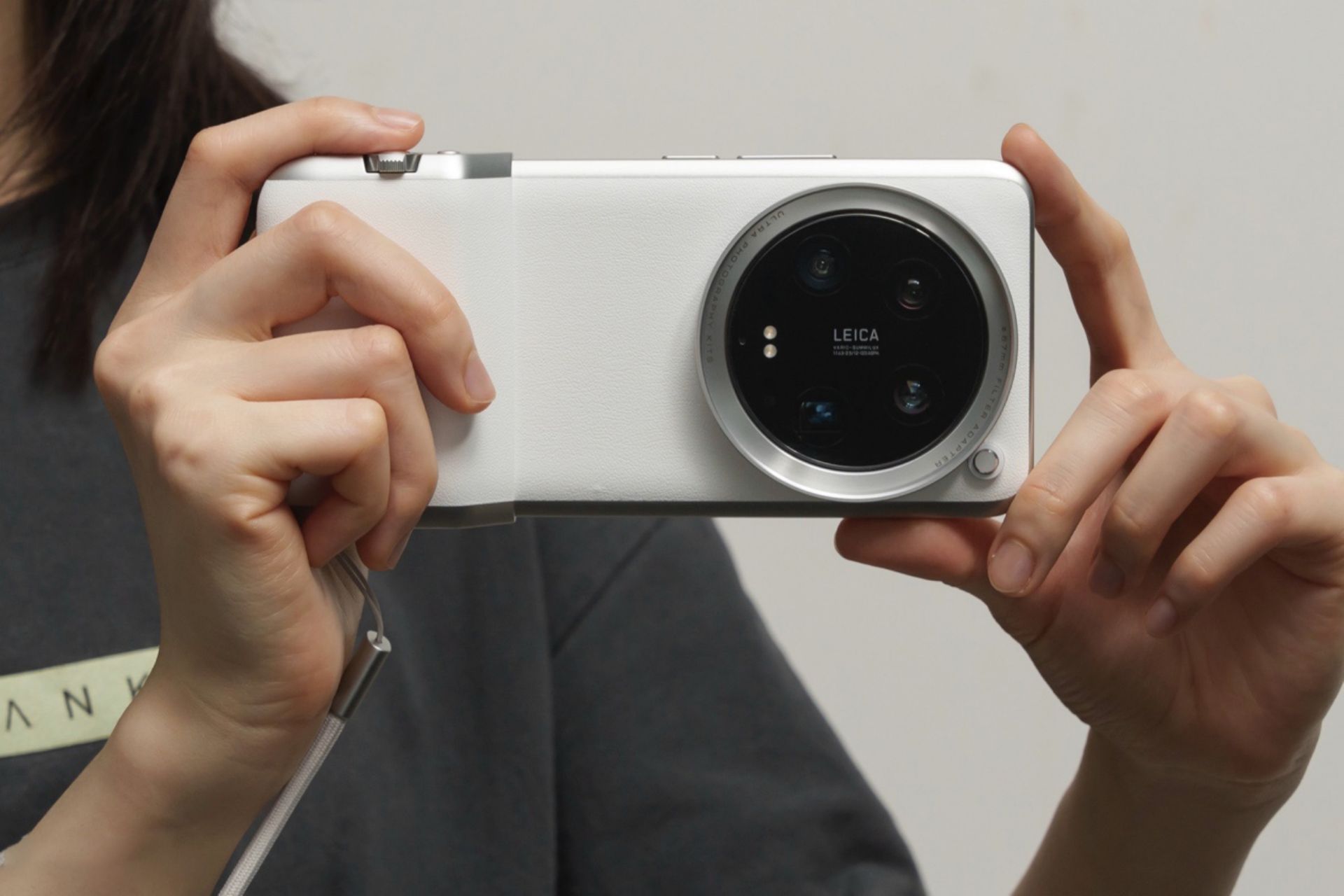
And it has a built-in 1500mAh battery to charge your phone, a zoom toggle and two-stage shutter on the grip, and a customizable scroll wheel. However, this scroll wheel is not a clear paragraph, easy to accidentally touch, the experience is slightly regrettable. But the overall texture of the grip is much improved over the previous one, and it feels much more worthwhile to get your hands on.
Top-class full equal-depth micro-curved screen, highlighting the flagship texture
Xiaomi 14 Pro is equipped with a full depth micro-curved screen for the first time, and the flagship quality is obvious from the front. This time, Xiaomi 14 Ultra also uses this screen, covered with sturdy Xiaomi Dragon Crystal Glass, scratch and drop resistance is even better.
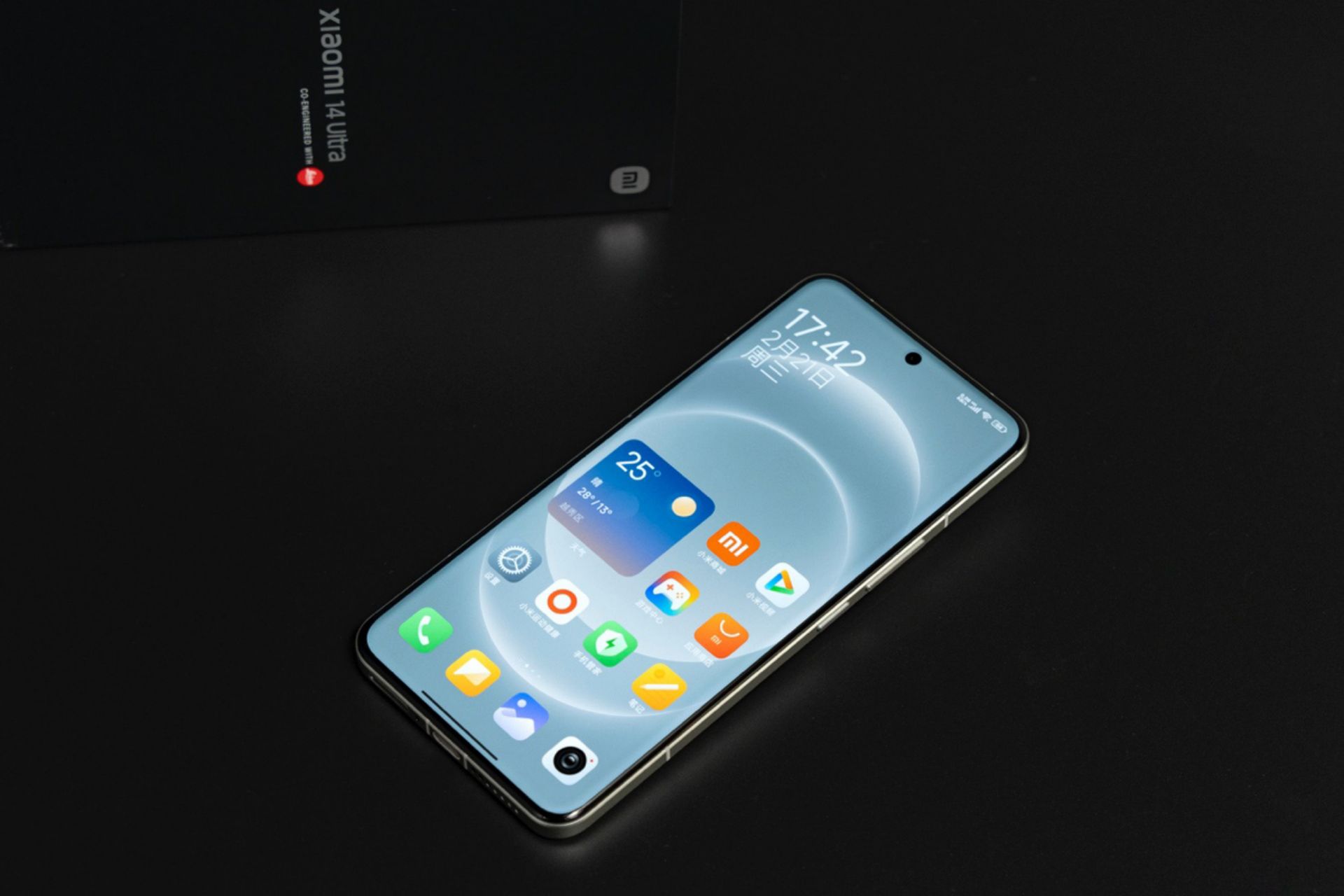
The advantage of the full depth micro-curved screen, mainly to ensure that the viewfinder image will not be distorted, the edge will not be green, and not easy to accidentally touch, the whole screen seems to hover above the phone, can do both straight screen perception, but also can do like the curved screen as a good sliding feel, especially when the side slide to return and slide the desktop, as long as the use of the you will definitely love this feeling.
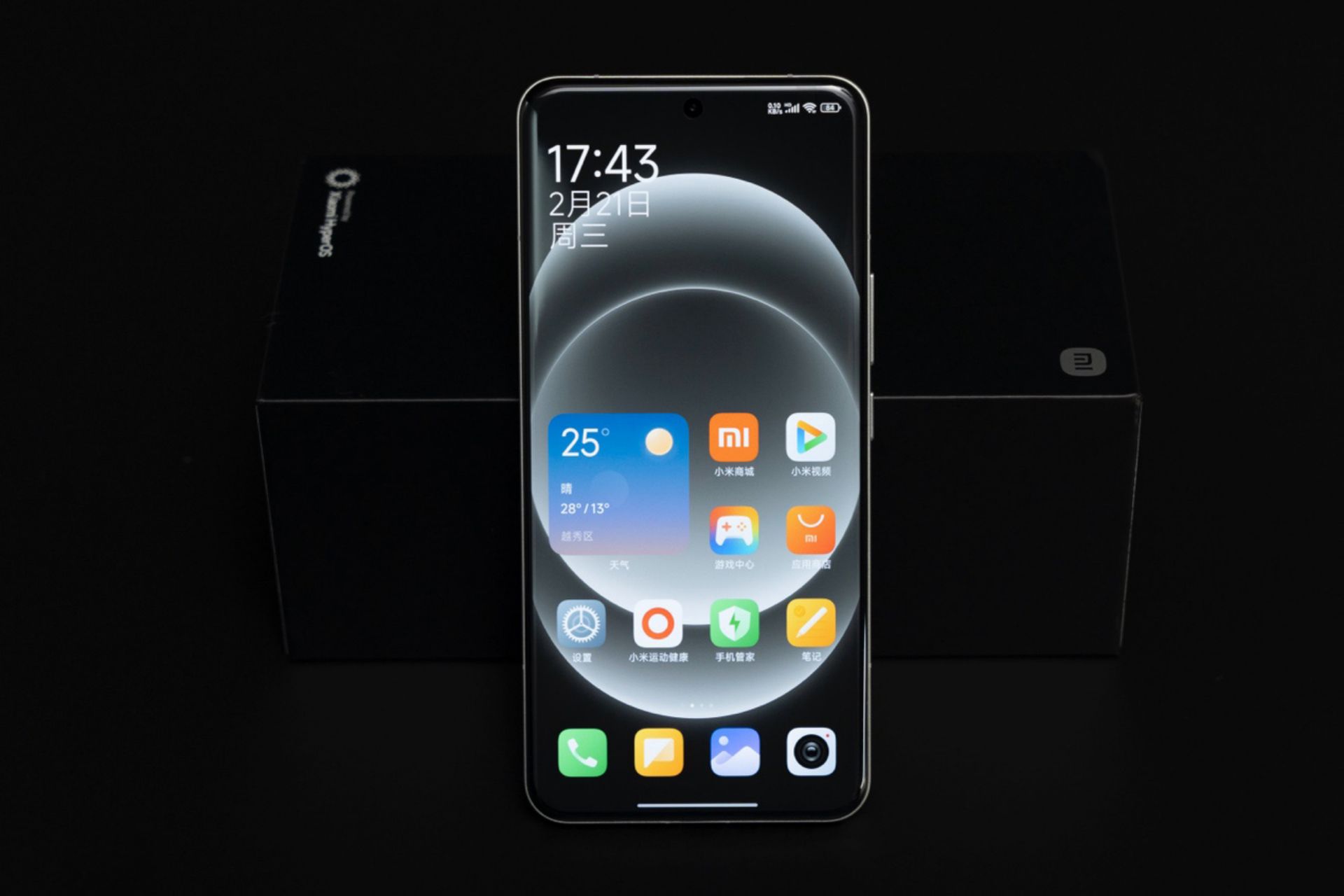
Parameters, 2K resolution, 120Hz refresh rate, the use of Huaxing Optoelectronics C8 light-emitting material, peak brightness can reach 3000nit, support for Dolby Vision and ultra-dynamic display, color gamut color calibration, Xiaomi's screen is not to worry about at all, and can most accurately display photos taken by Xiaomi 14 Ultra. In terms of eye protection, it supports DC dimming and 1920Hz high-frequency PWM dimming, so that you can see for a long time without tiring your eyes.
Enhanced communication capabilities, back to the essence of the phone
In fact, in recent years, everyone is rolling performance, screen, image, fast charging and other aspects, often ignoring the essence of the phone: communication, and Xiaomi this year also put this aspect of the attention of the phone stuffed with a Xiaomi Surge T1 communication chip, this chip is used to select and control the antenna of a specific frequency signals, so as to receive clearer signals, and to reject other frequencies. On the Xiaomi Mi 14 Ultra, the Surge T1 also controls the Wi-Fi and cellular antennas so that they always work at their best, and in real-world testing, communications for mid- and high-frequency cellular data were improved by 37 percent, and Wi-Fi performance by 16 percent.
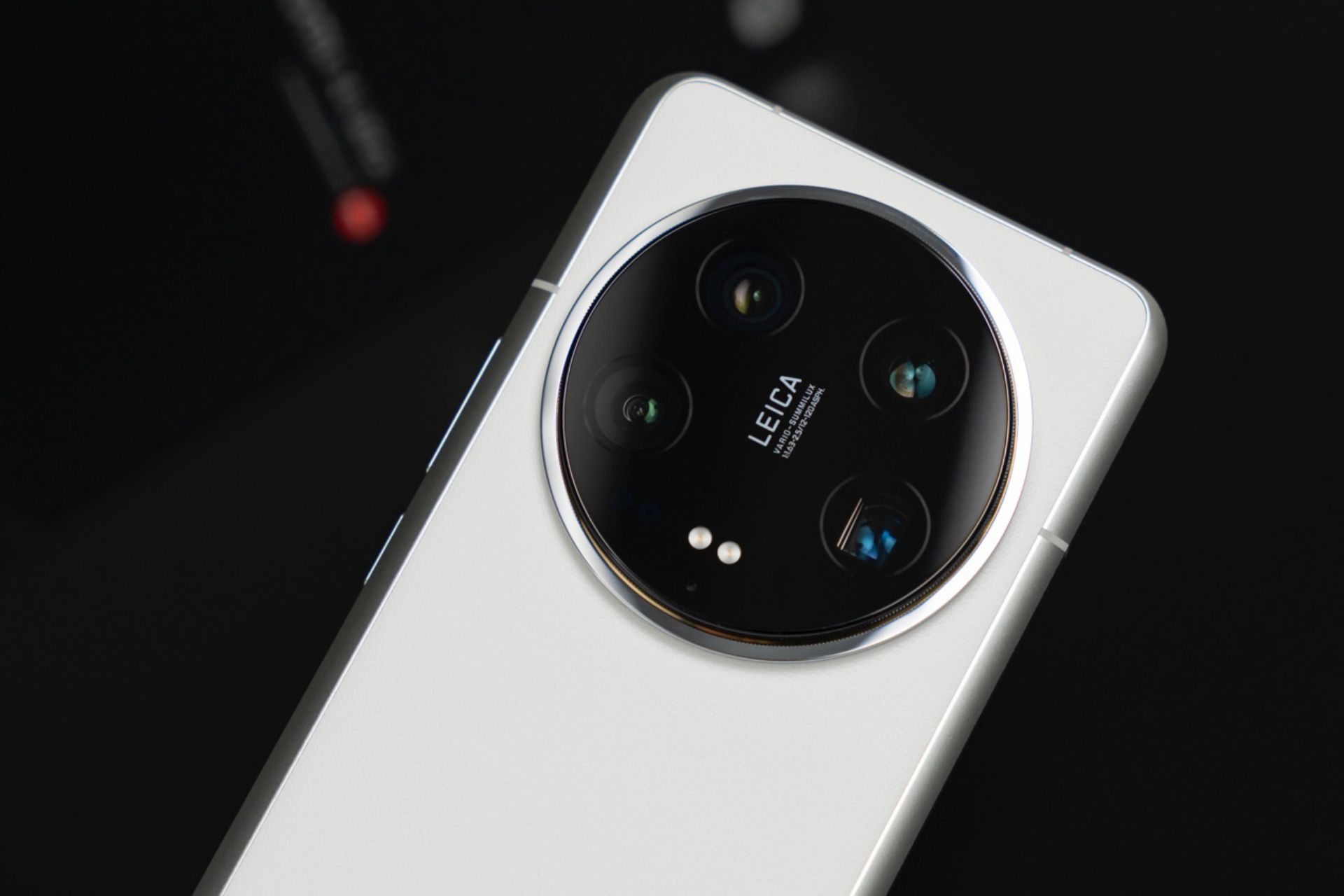
In terms of software, the Xiaomi 14 Ultra's built-in HyperOS learns your commuting route in the background and predicts upcoming weak-signal areas as you move, optimizing nearby base stations for faster return to the network in scenarios like in elevators and basements. There is also a smoother experience for scenes such as high speed trains, highways, and airports. Even in extreme weak-network scenarios, the Xiaomi 14 Ultra enables four low-frequency antennas for reception to optimize the signal and improve network speed.
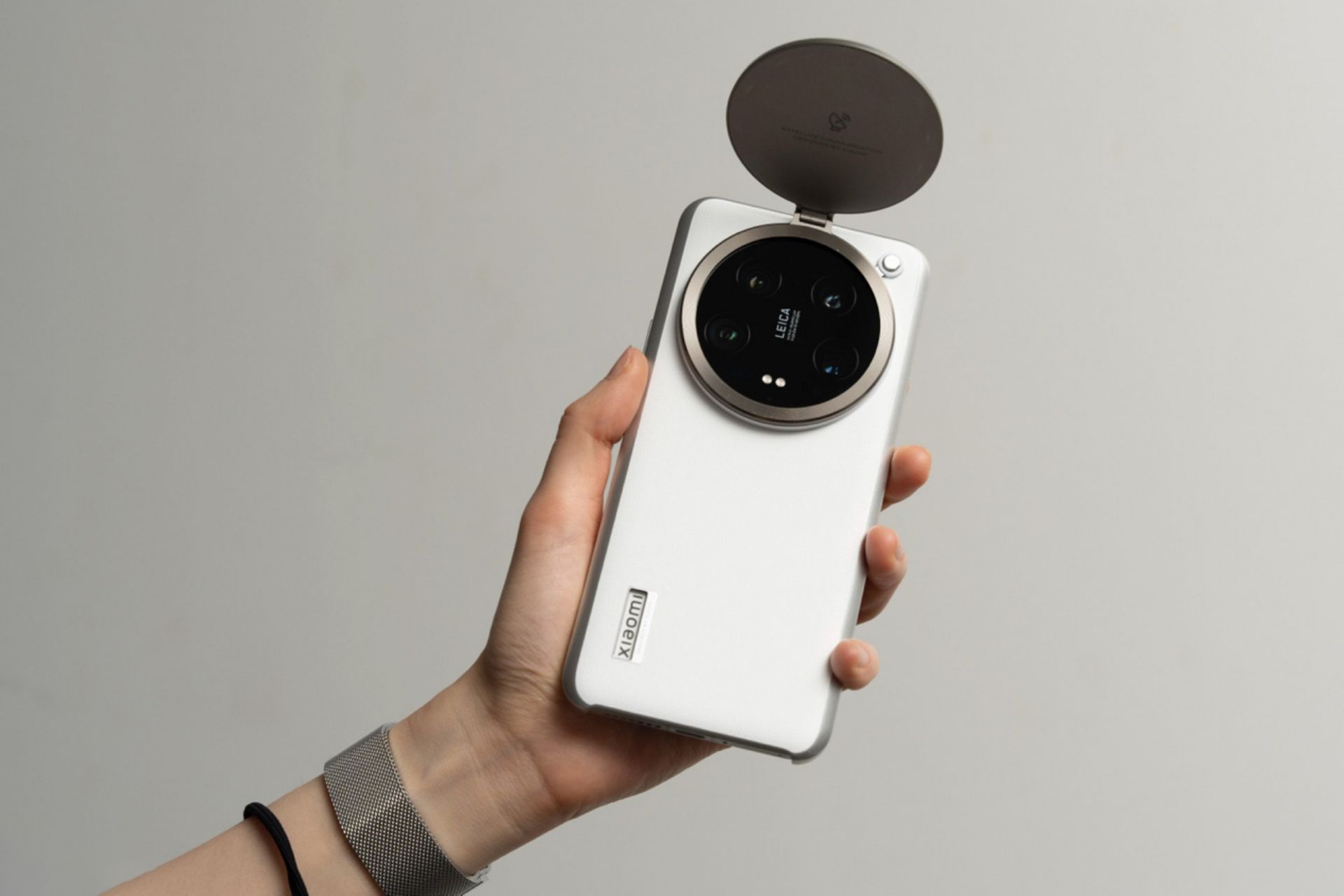
While these still seem to be some fairly routine network optimization operations, this next one is even more crucial in allowing you to connect with the outside world even in places with no signal coverage at all. It is the Tiantong satellite communication function, Xiaomi 14 Ultra equipped with a Surge T1 satellite version of the chip, able to accept satellite signals, so that users can be in a completely no-signal scenario, to be able to talk to the outside world in order to protect their own safety in case of emergency, this function can be said to be used once to save a lifetime.
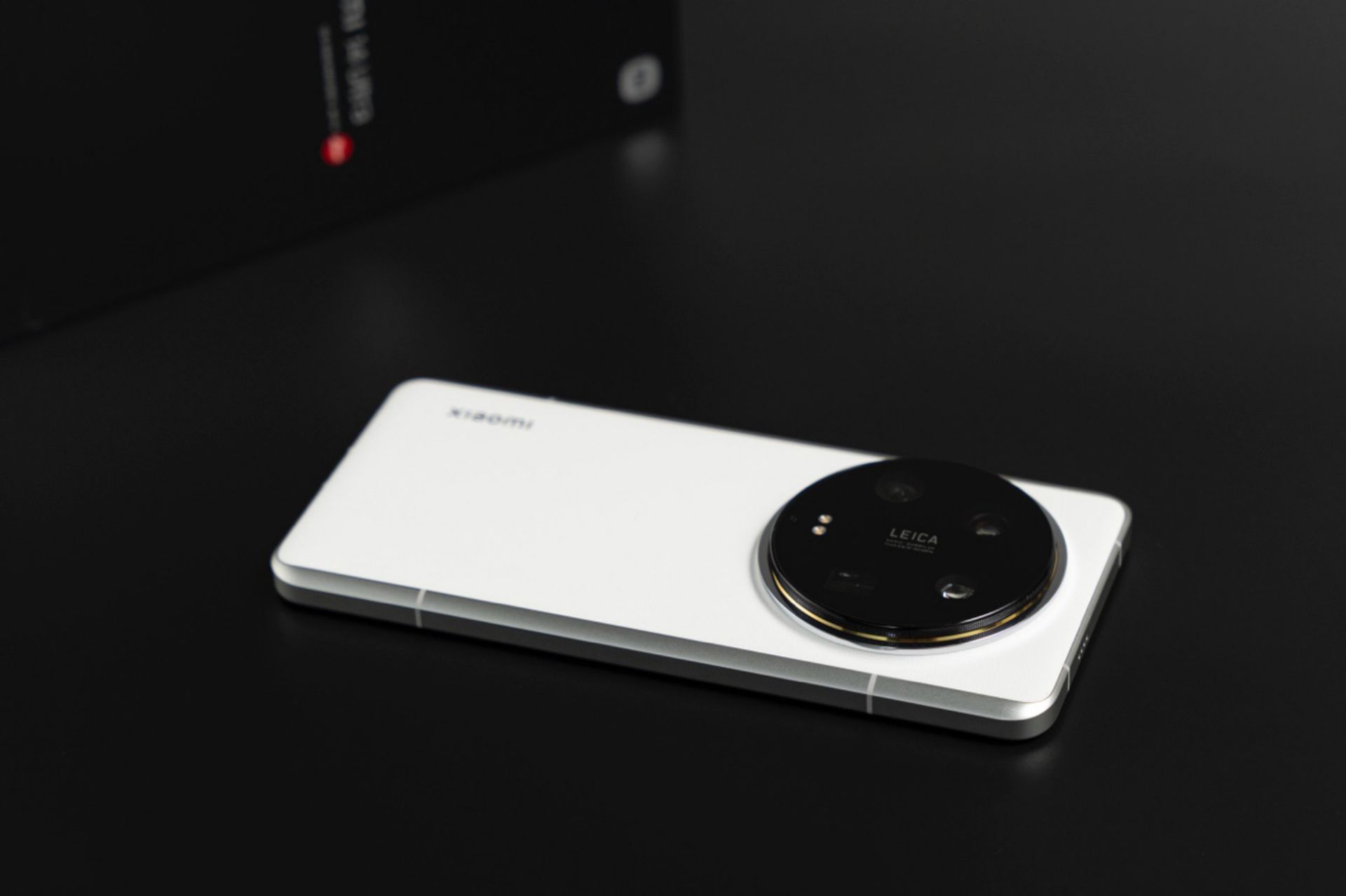
Large battery with long battery life and wireless fast charging to keep up with it
The last generation of Xiaomi 13 Ultra was touted by users for its battery life, and Xiaomi has worked hard to solve it in this generation, with a built-in 5300mAh Xiaomi Jinshajiang battery that utilizes a more advanced silicon anode technology for a higher energy density and a better battery life. The phone is built with the new Xiaomi Surge P2 fast charging chip and G1 battery management chip, bringing 90W wired fast charging and 80W wireless fast charging, which also stands up to the flagship's name in terms of battery life and charging specifications.
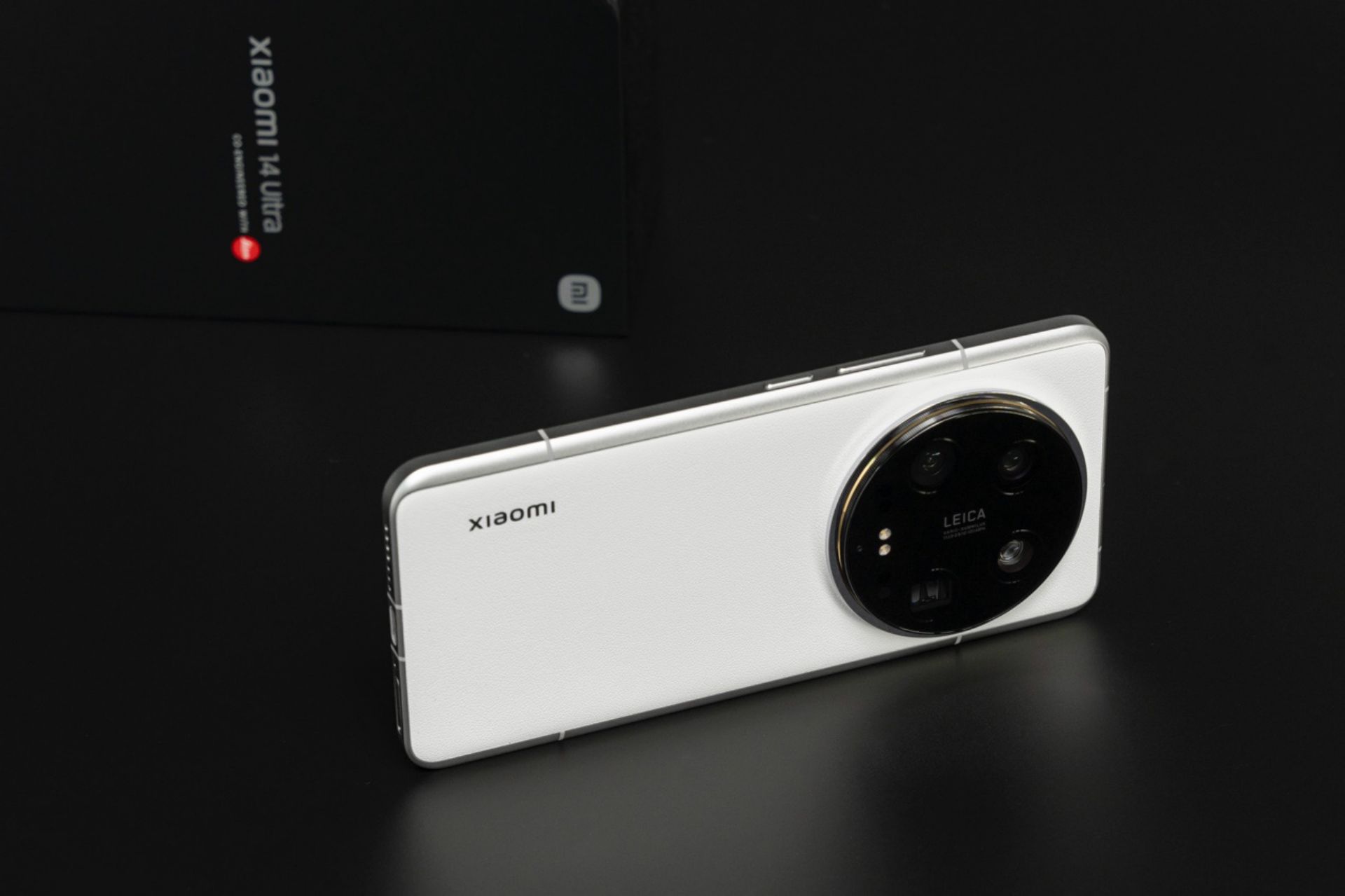
To summarize
The Xiaomi Mi 14 Ultra's sincerity starts with the design and texture, with a full iso-depth micro-curved screen on the front, a right-angled center frame, and a power button that incorporates Parisian studs, it looks like a true flagship phone.
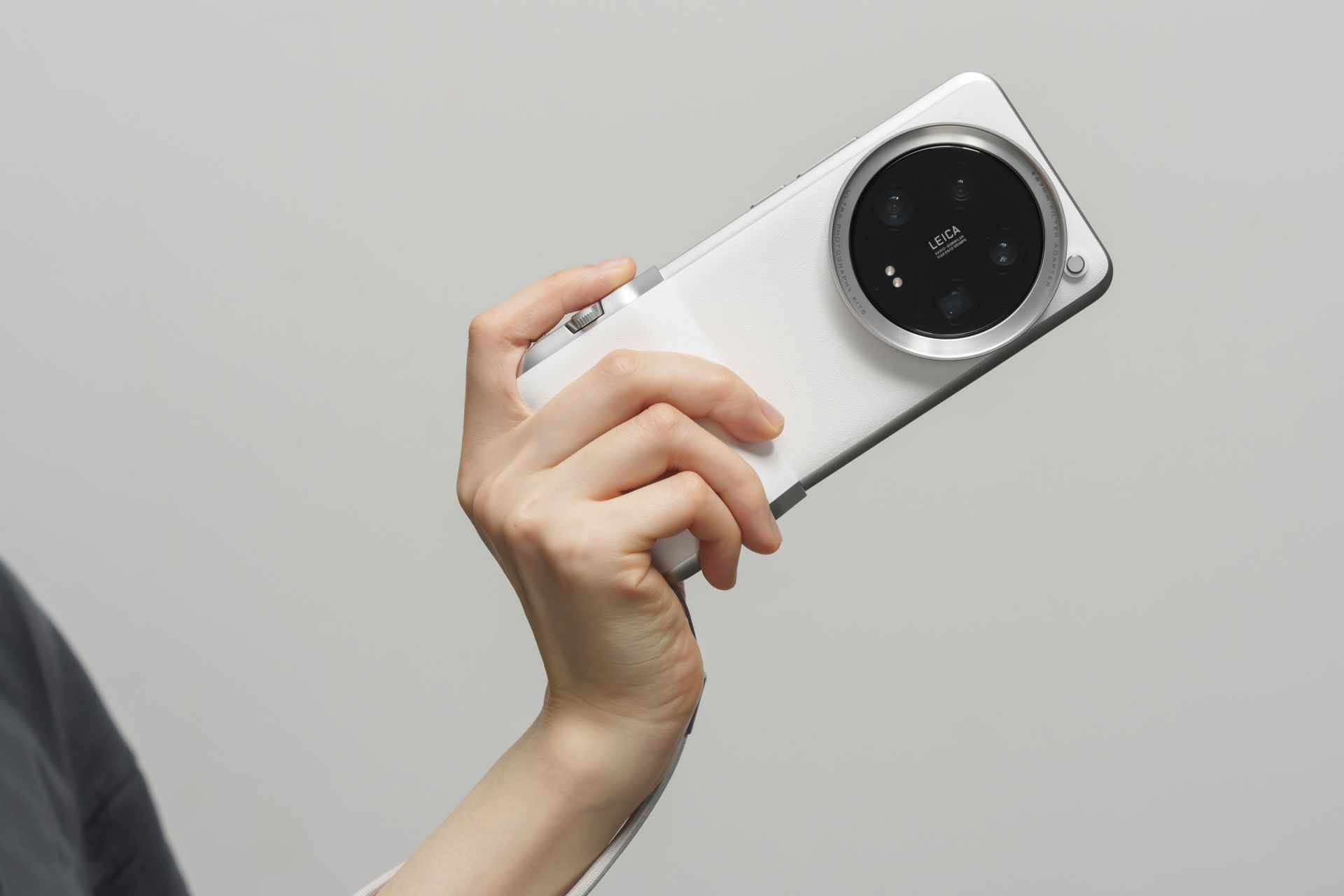
Finally, the hardware configuration and comprehensive experience, first of all, the image, in the landscape, street photography, portrait shooting capabilities of the comprehensive upgrade, compared to the peak of the Xiaomi 13 Ultra can be further, this generation of film gives people a more advanced feeling, really achieve "beyond the human eye, feel the heart". In terms of body architecture, communication capabilities, and battery technology, Xiaomi has continued to innovate, stuffing more user-perceived technologies into the phone. In the comprehensive experience really let people love it, 2024 image flagship throne it can be seated at the beginning of the year, and even within a year are not necessarily able to have challengers have the ability to challenge it.




